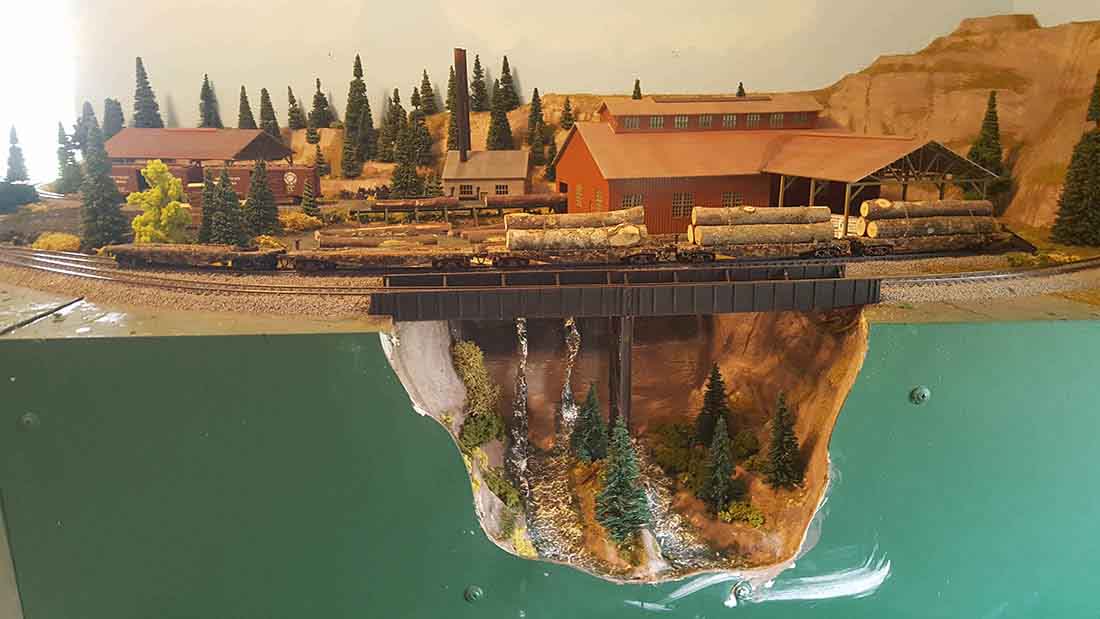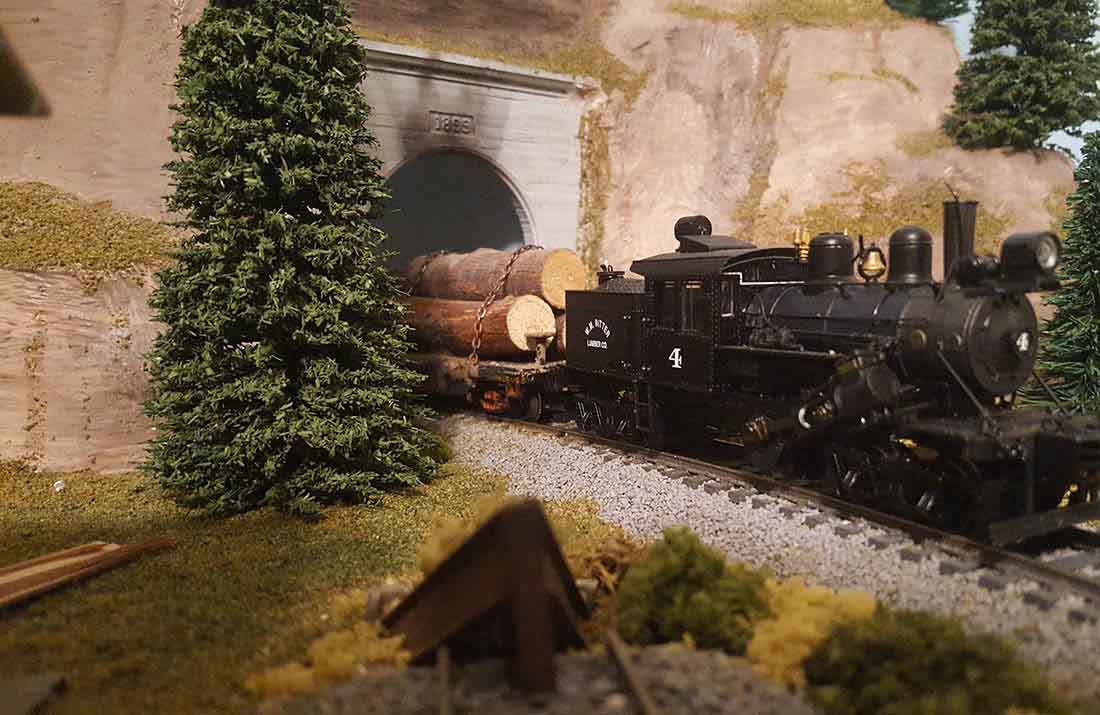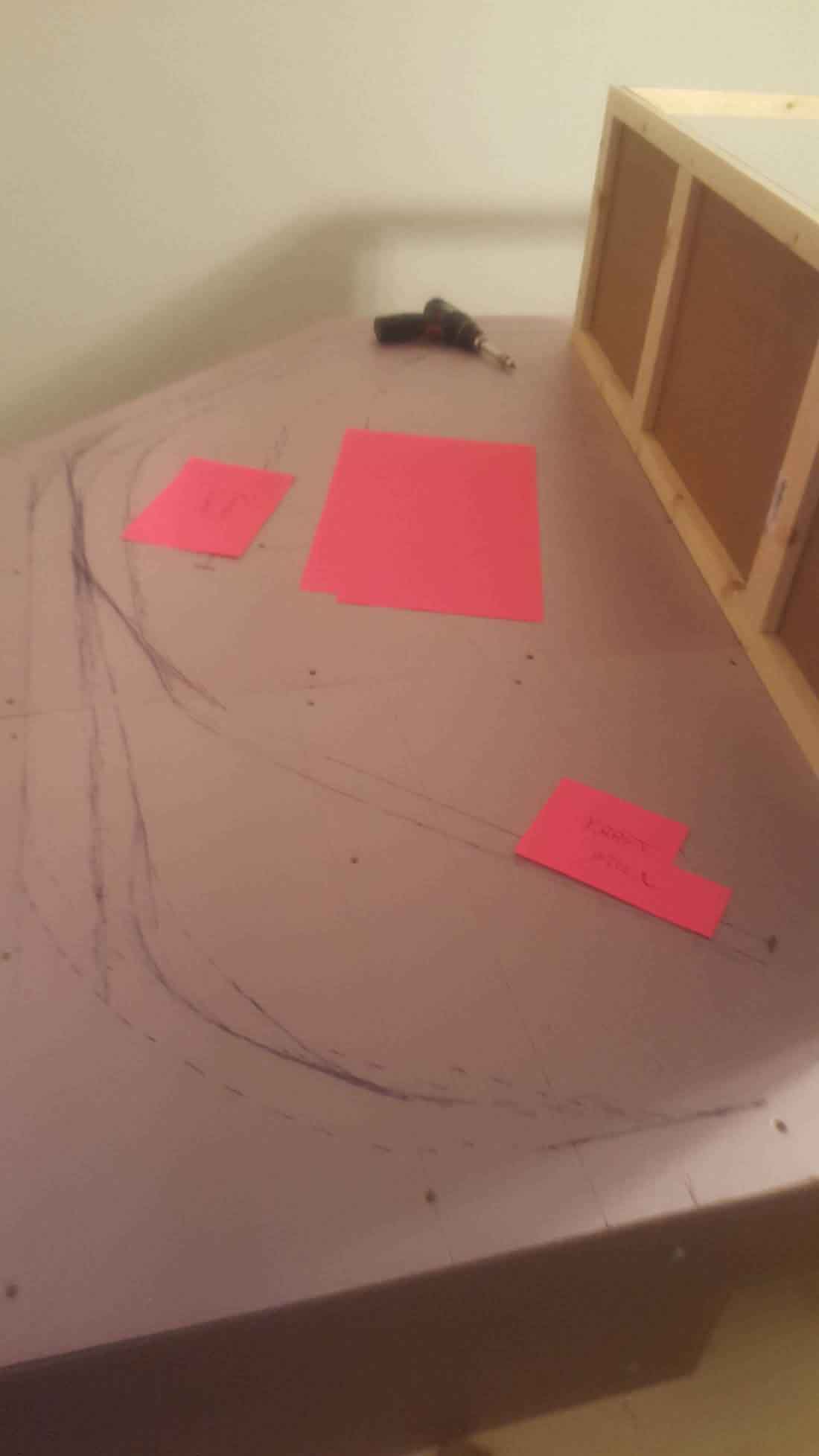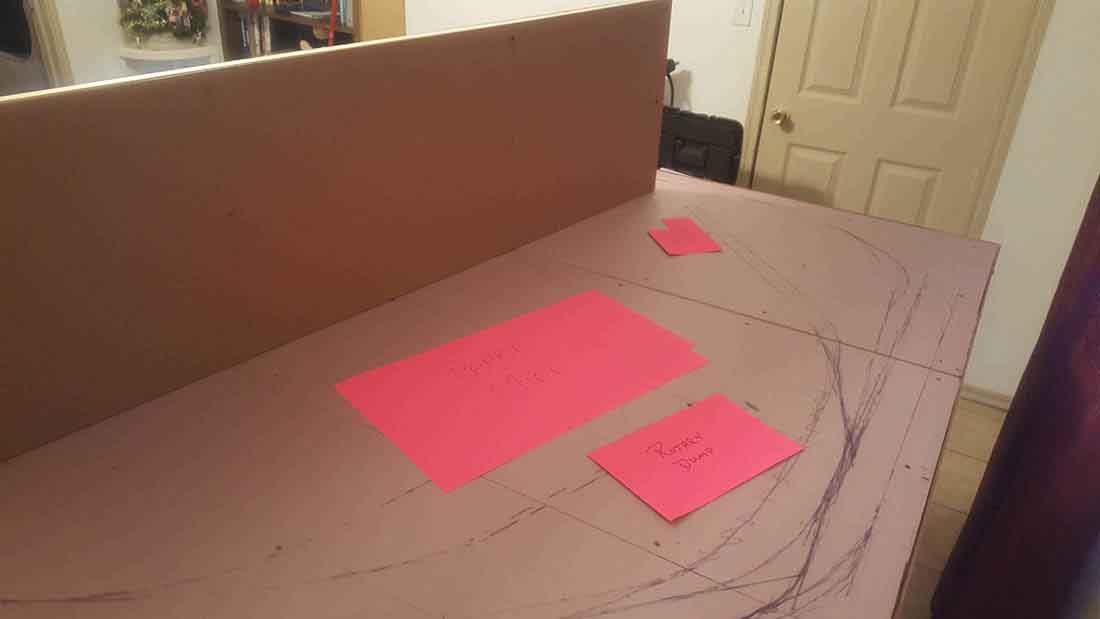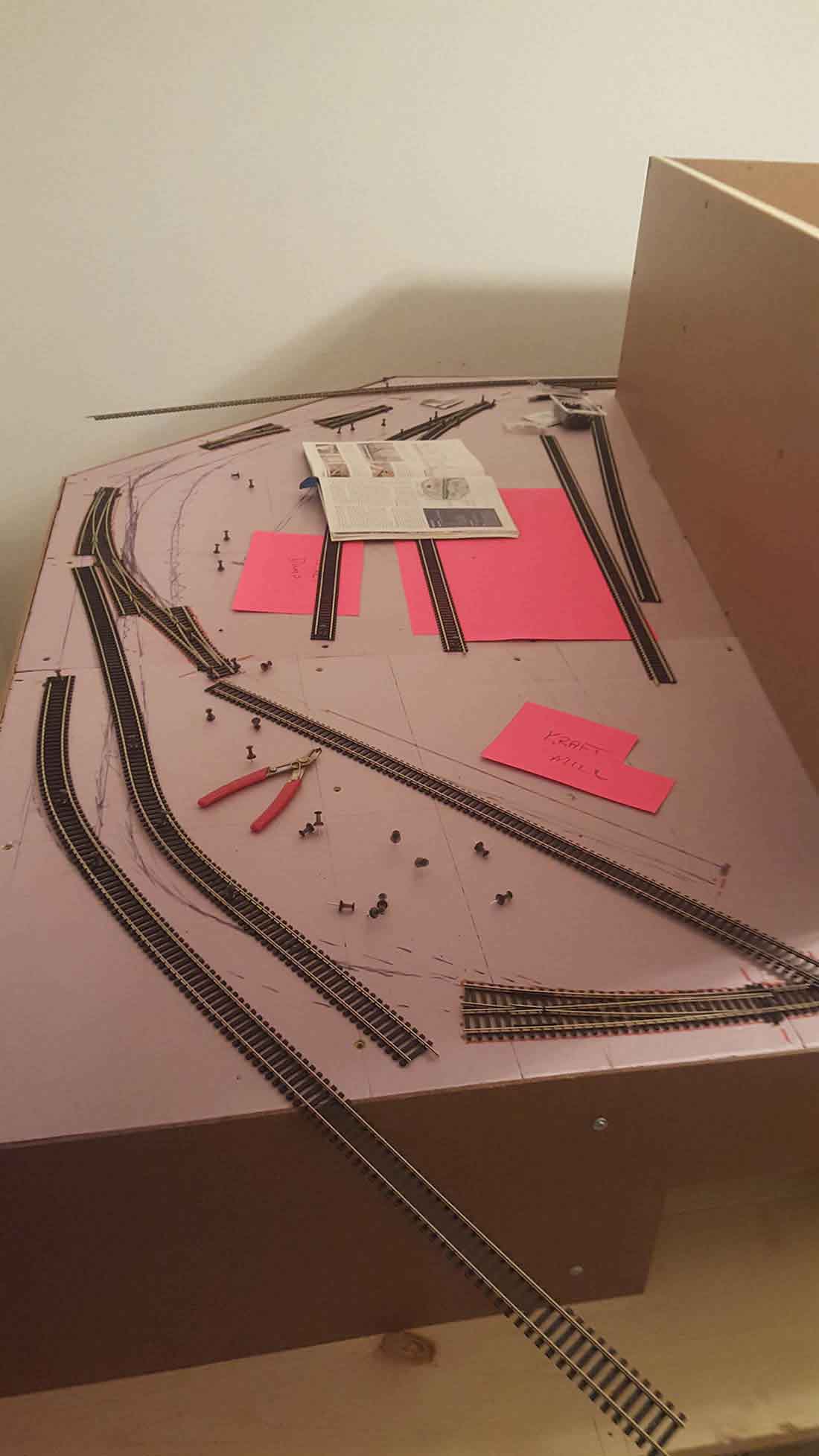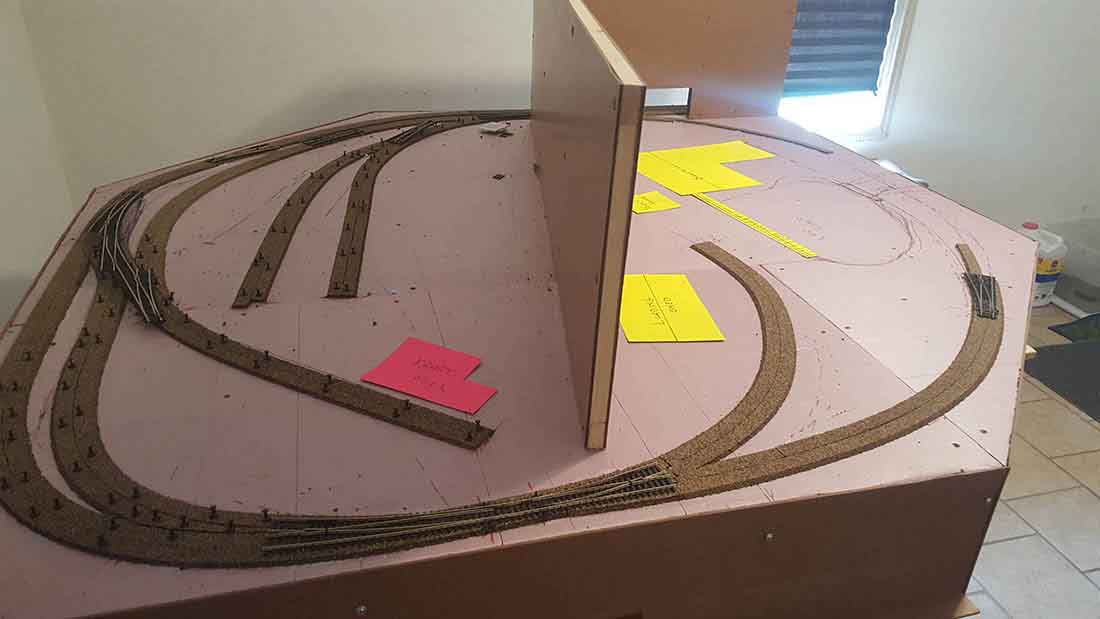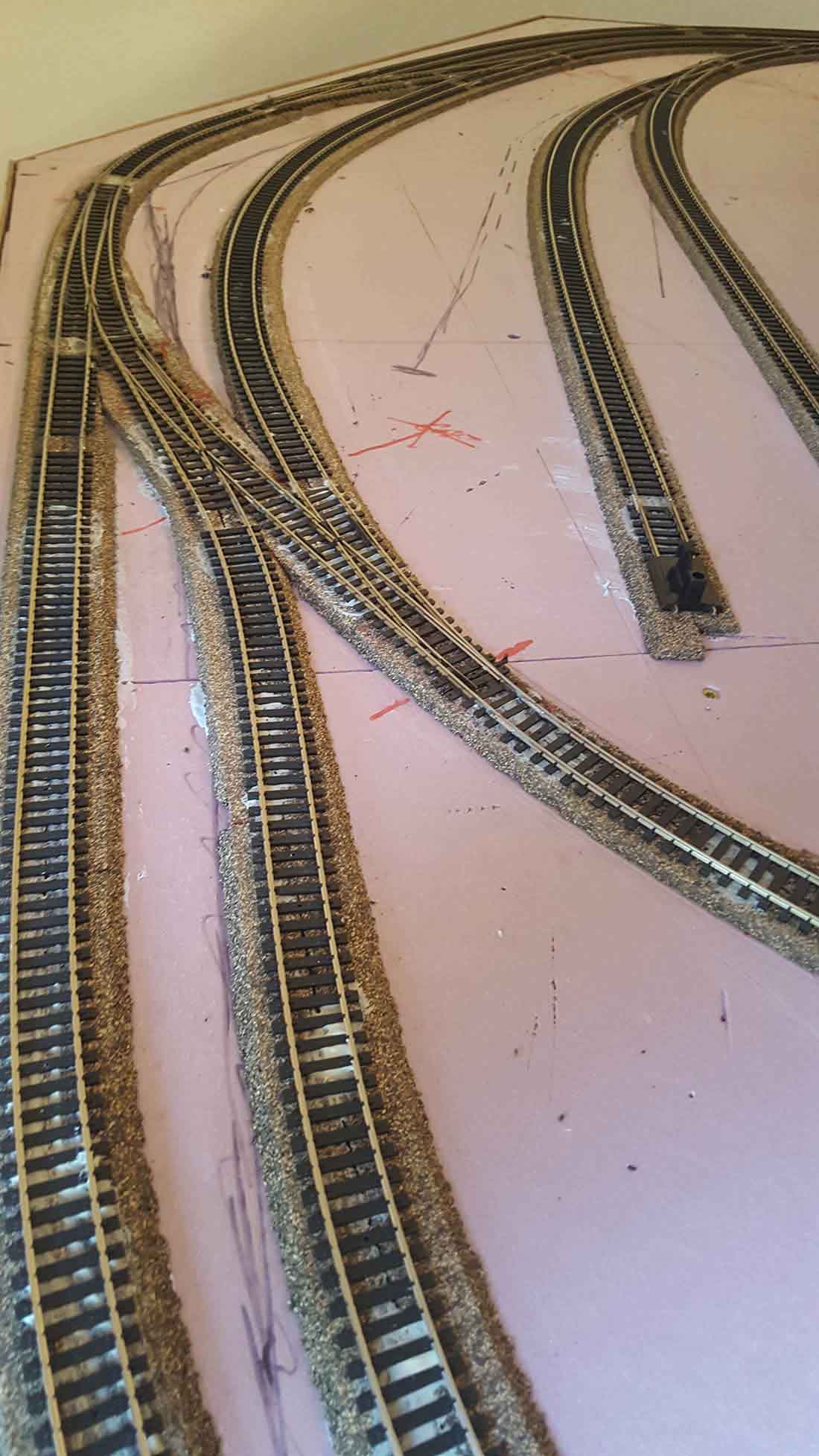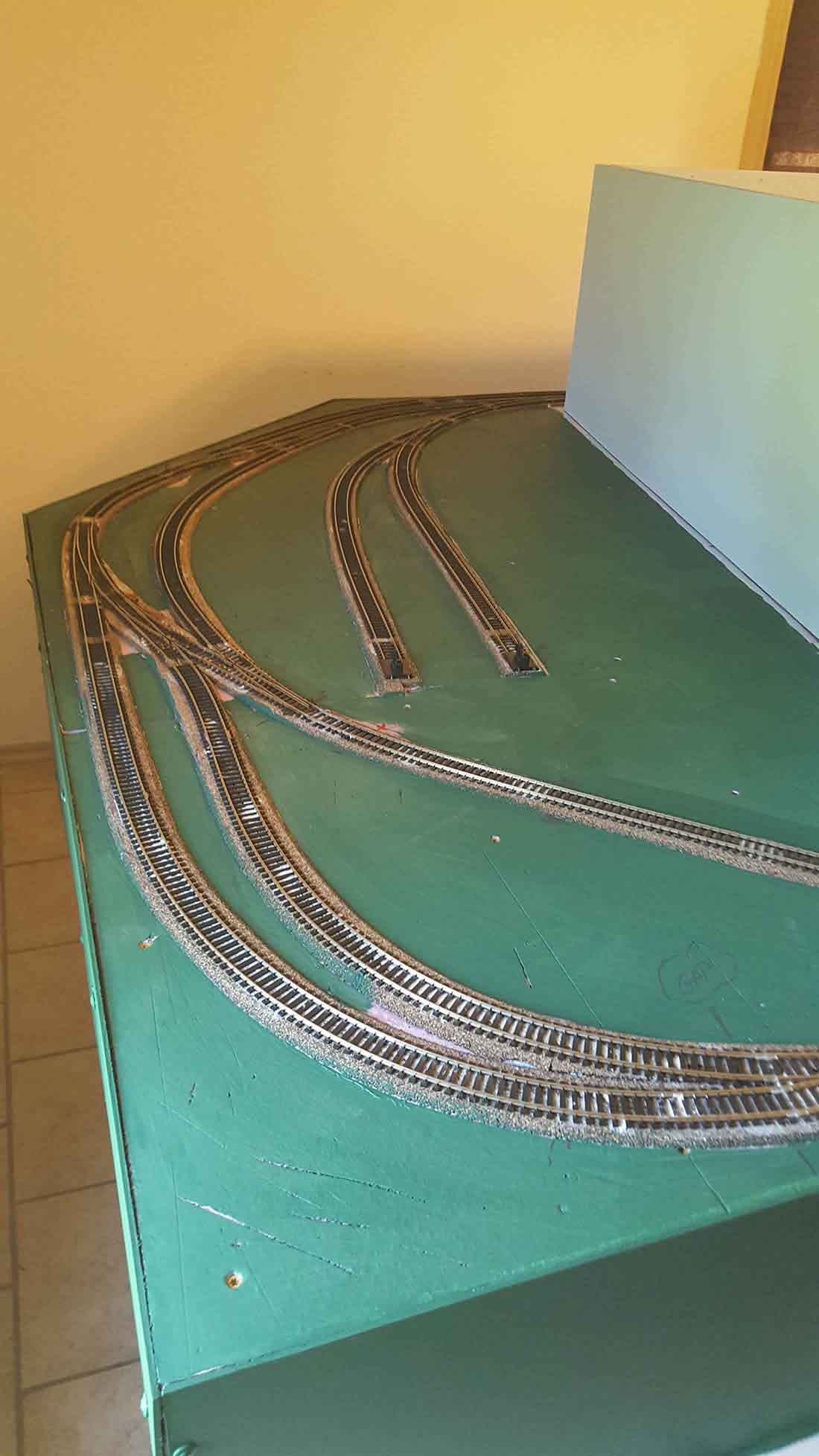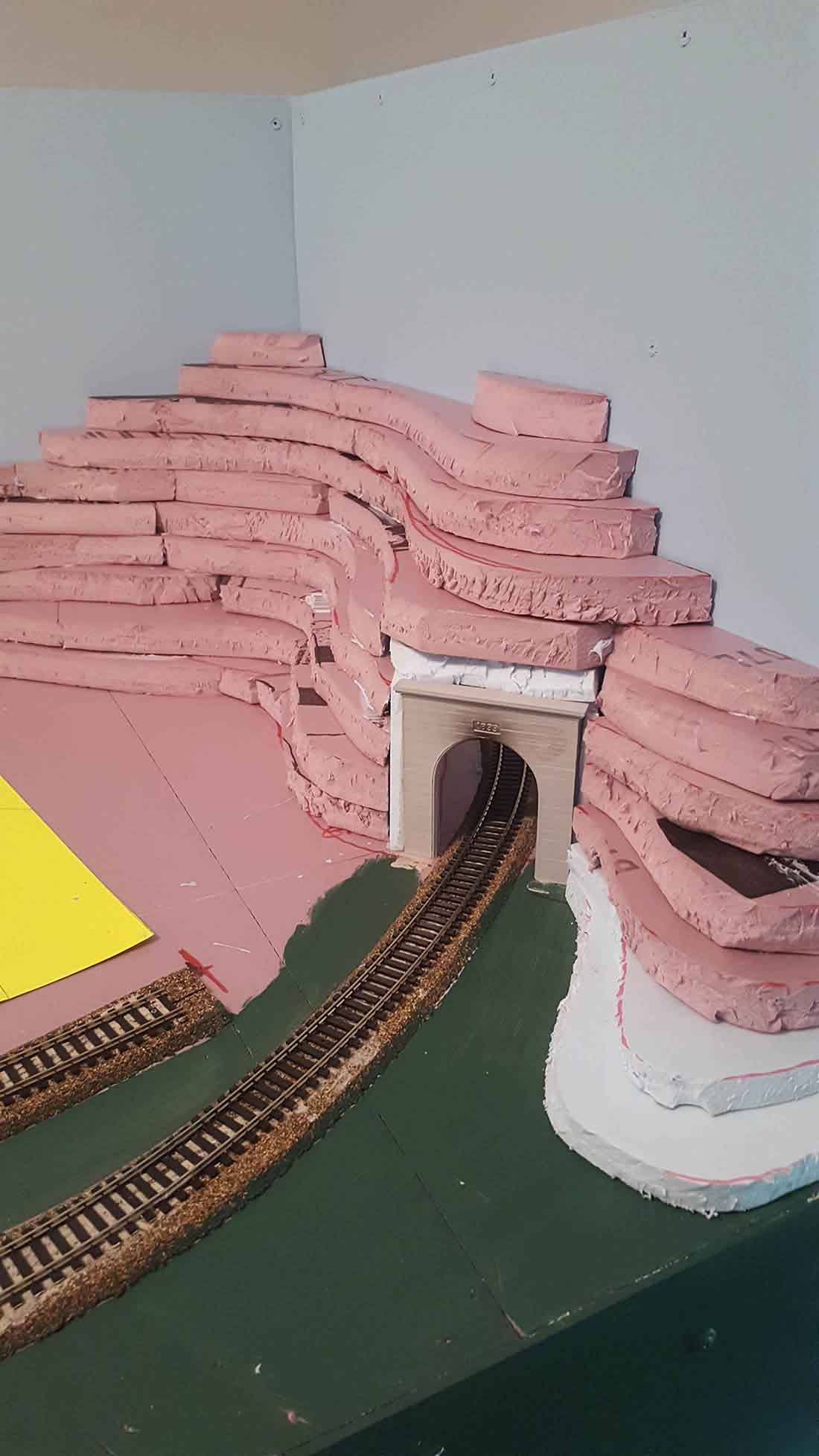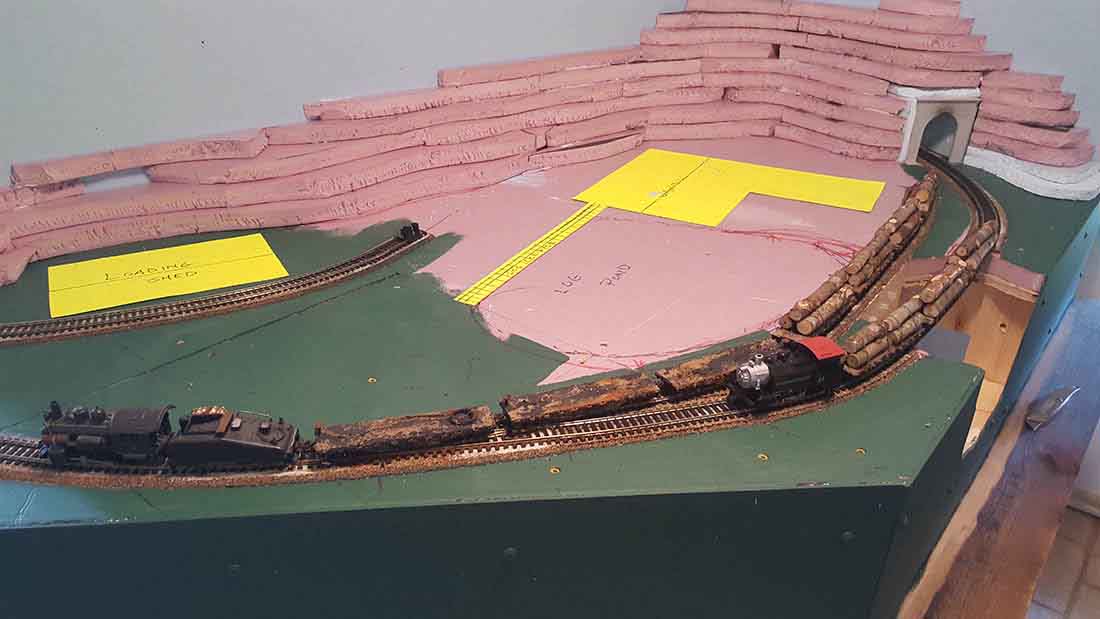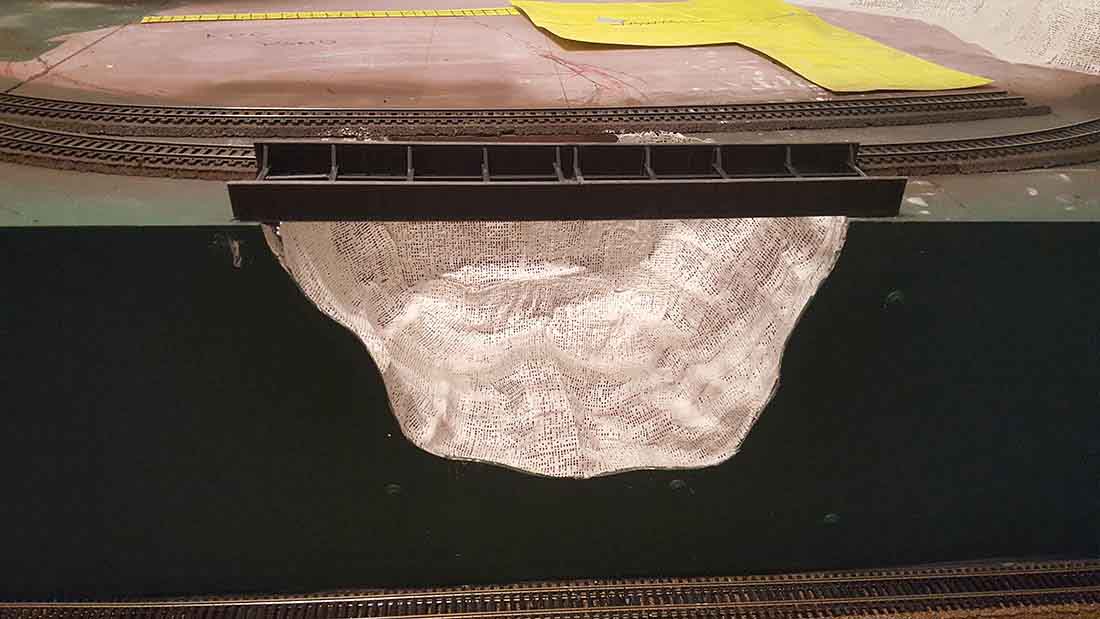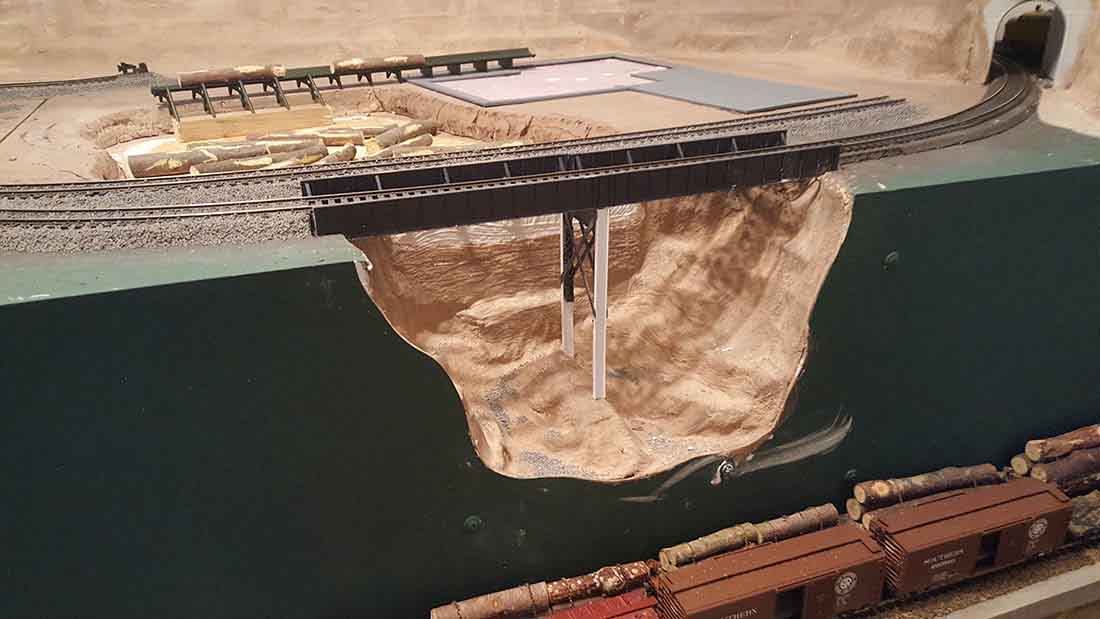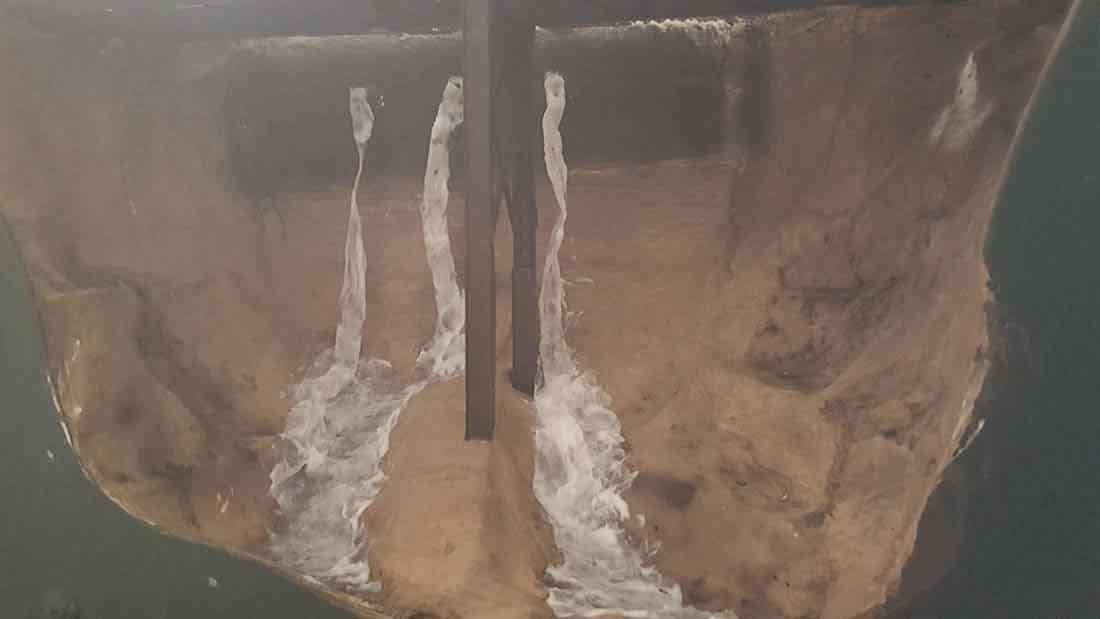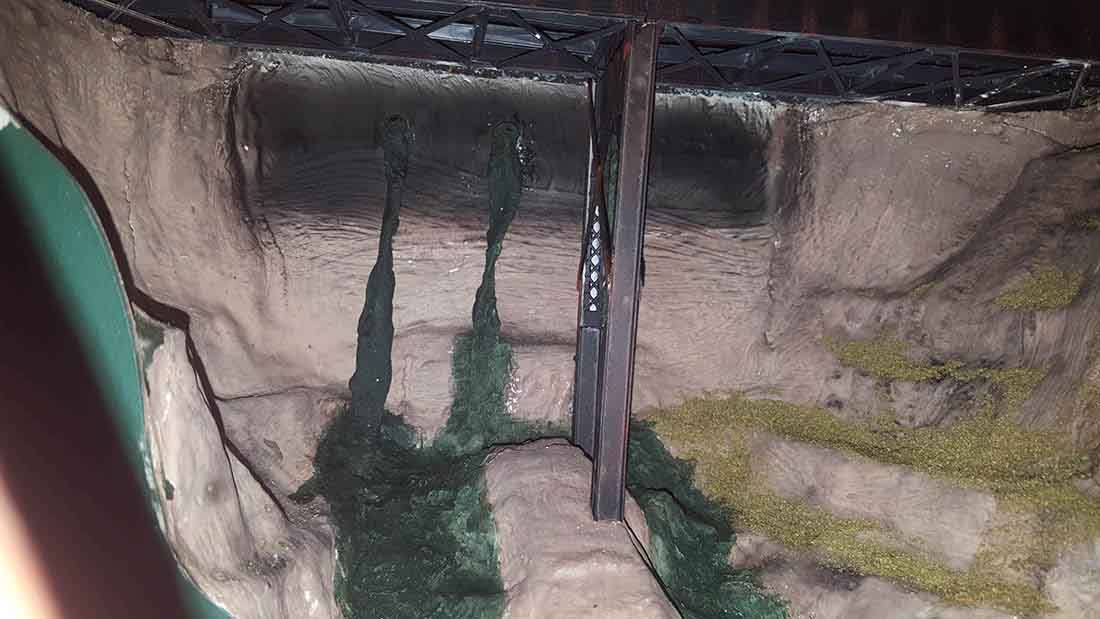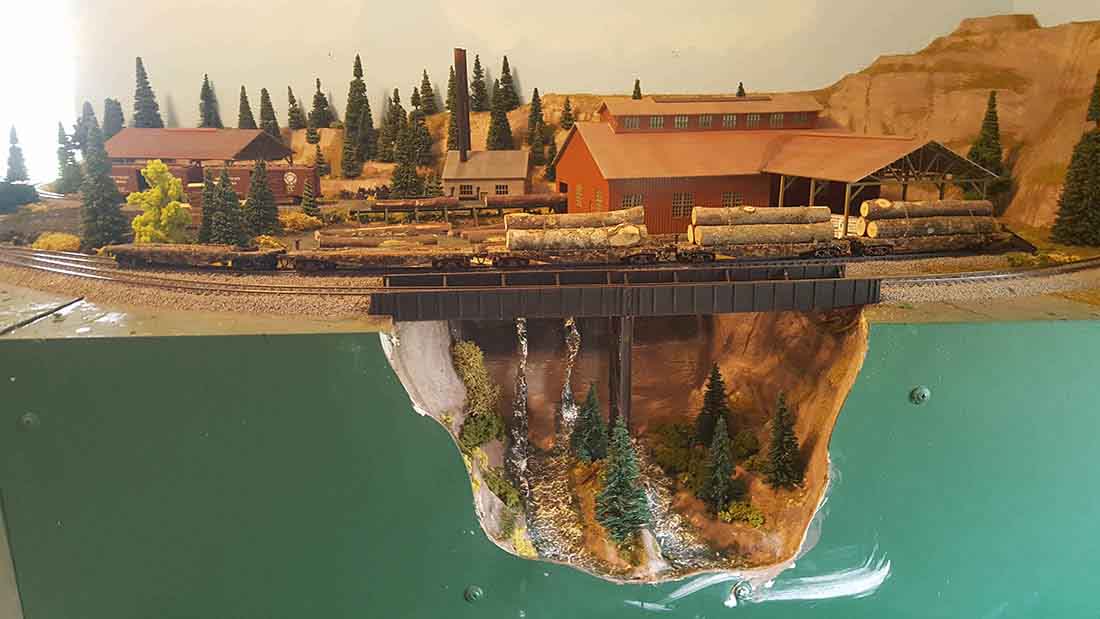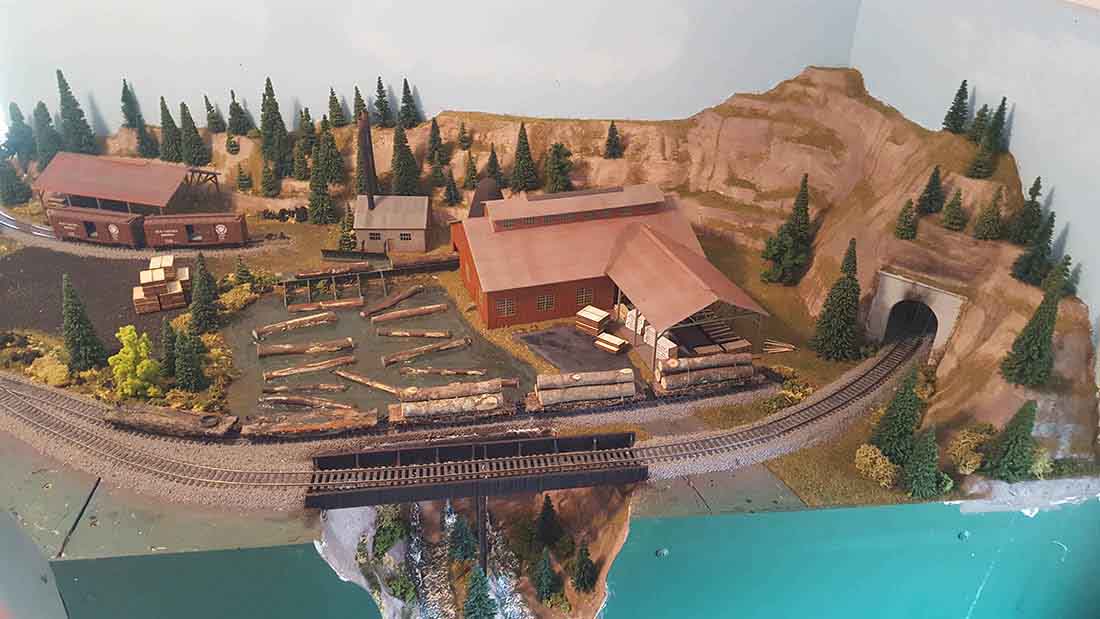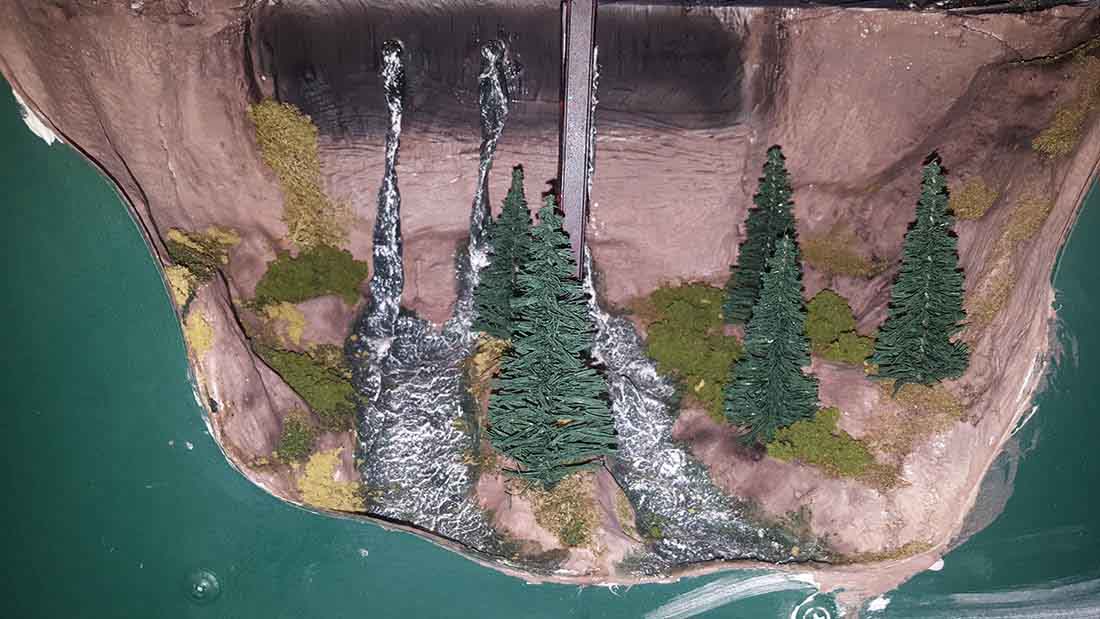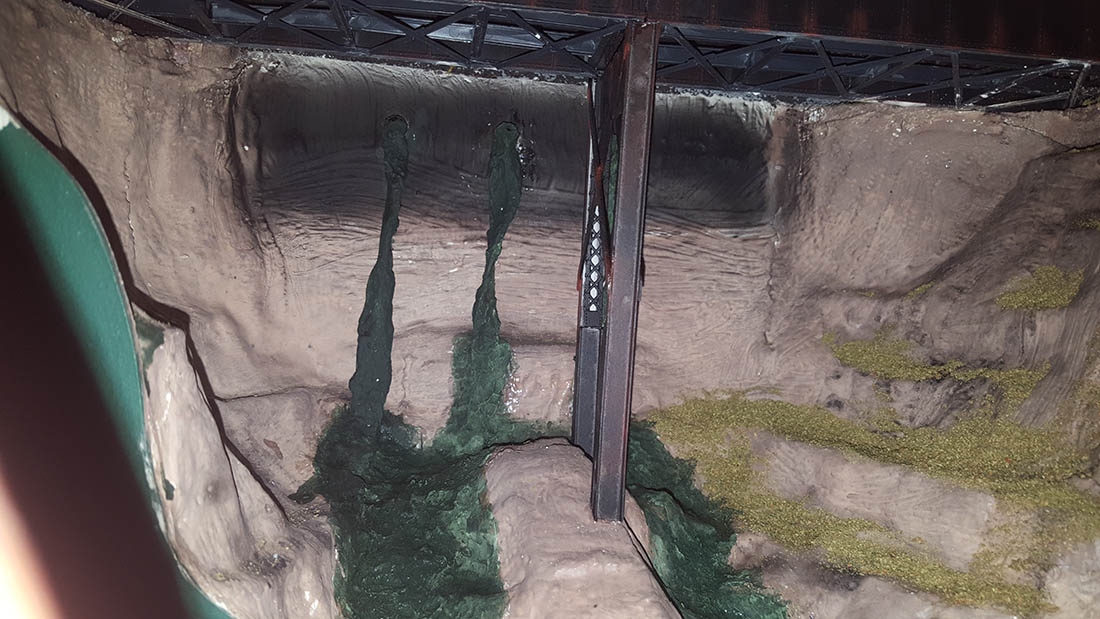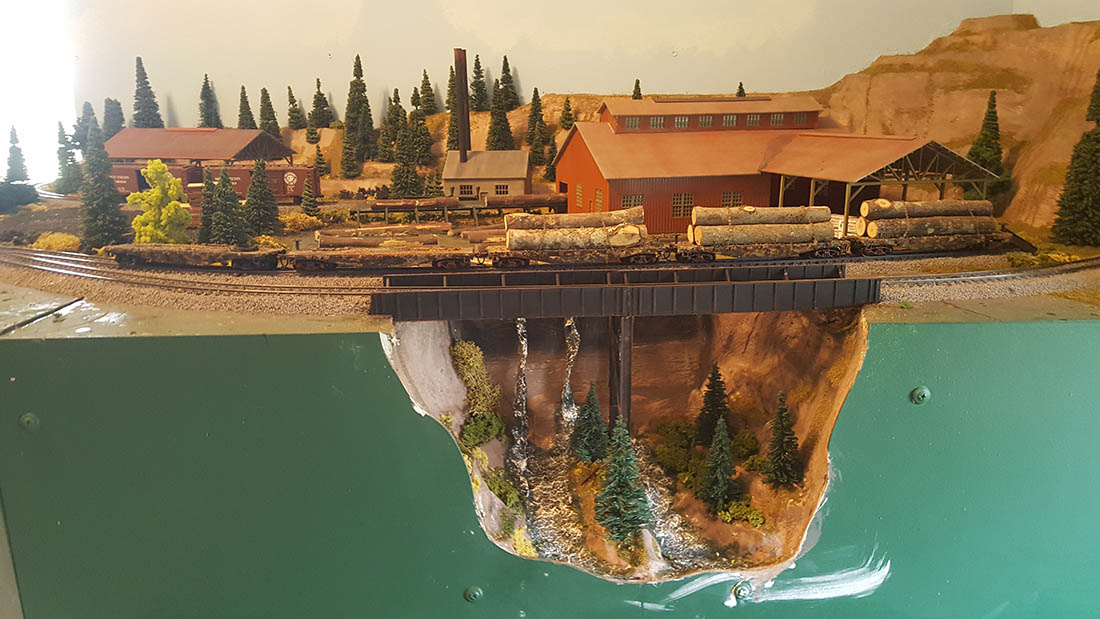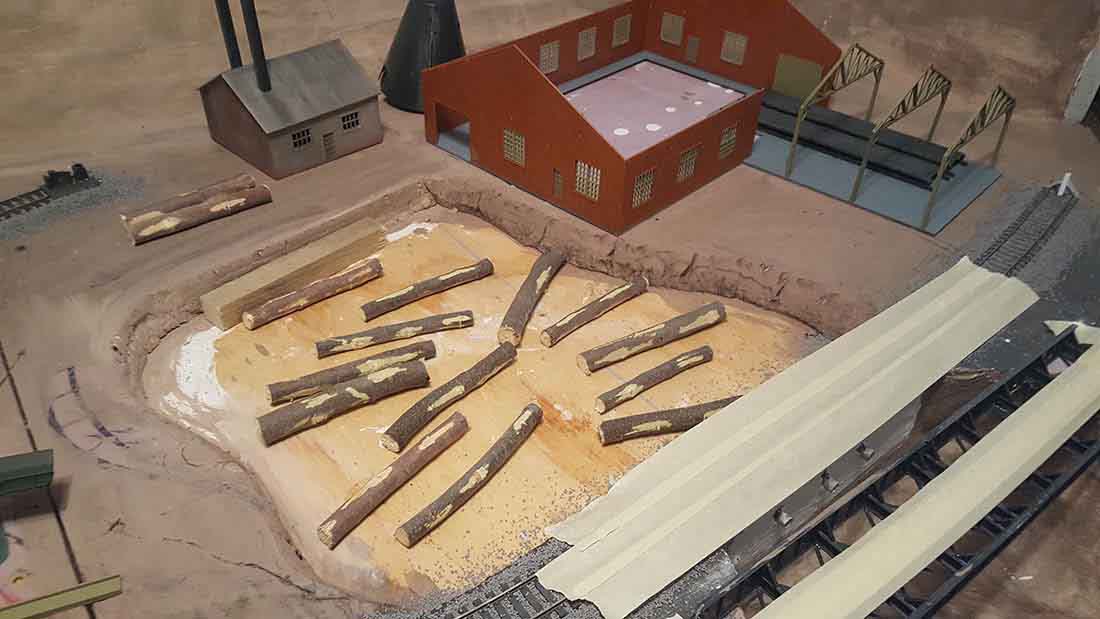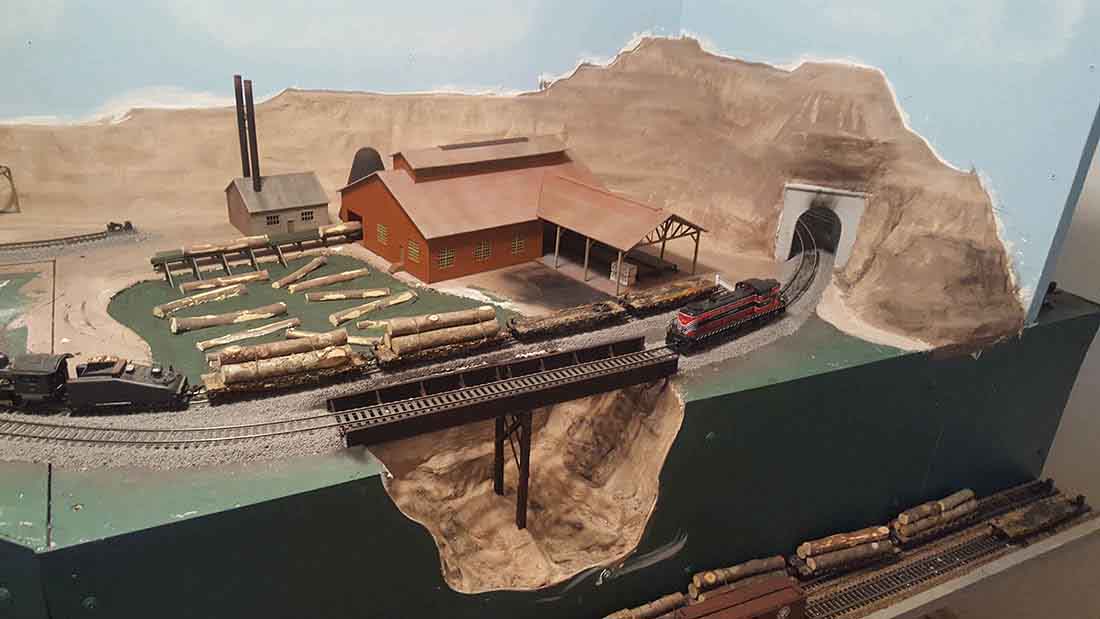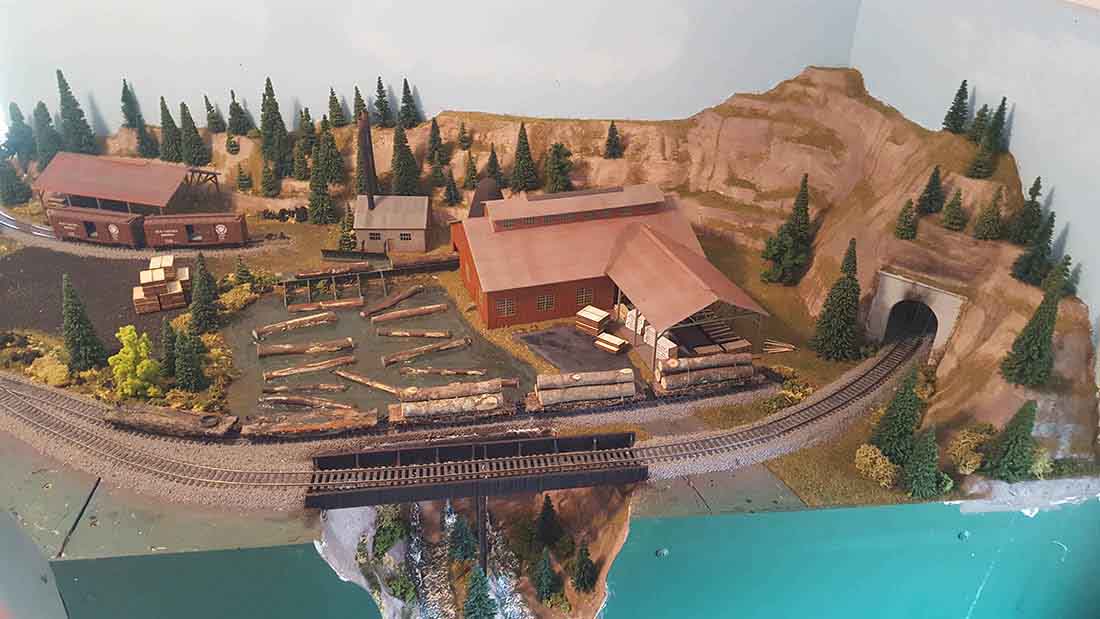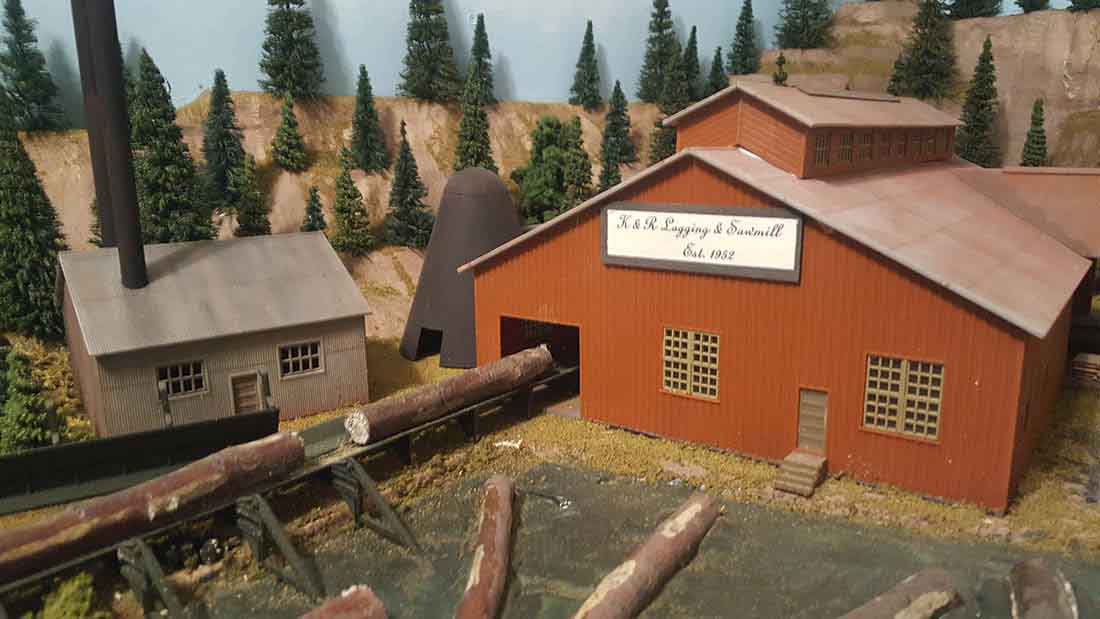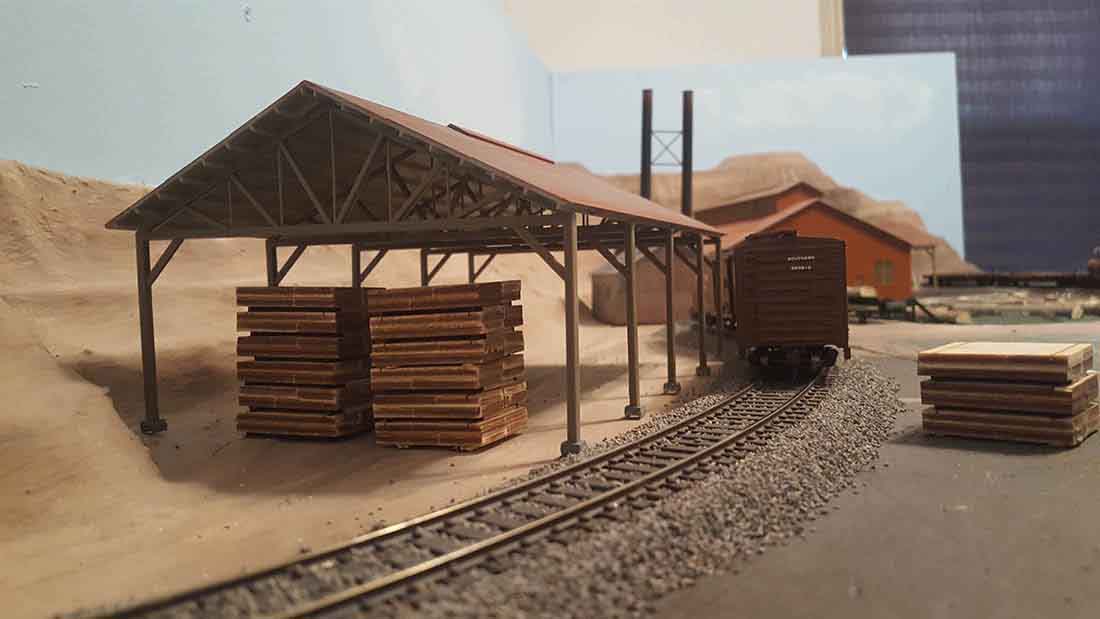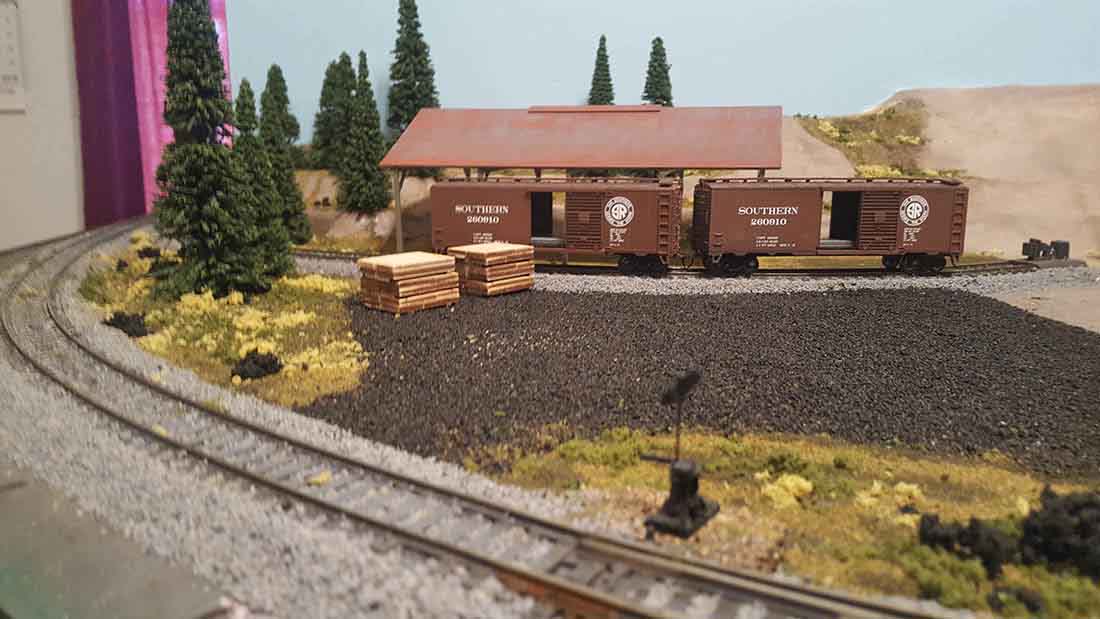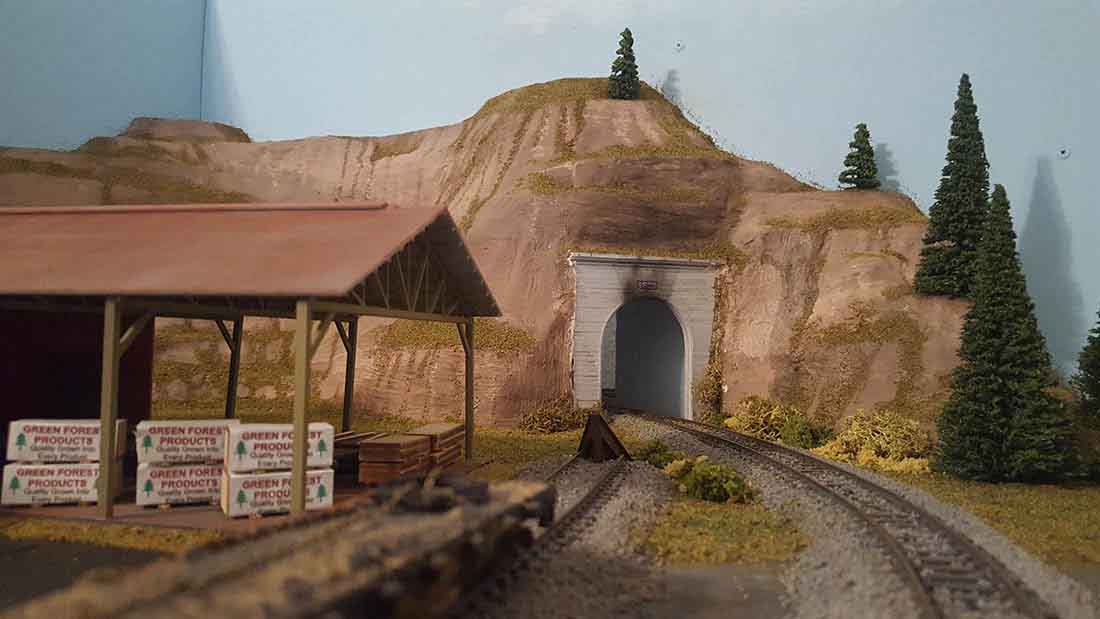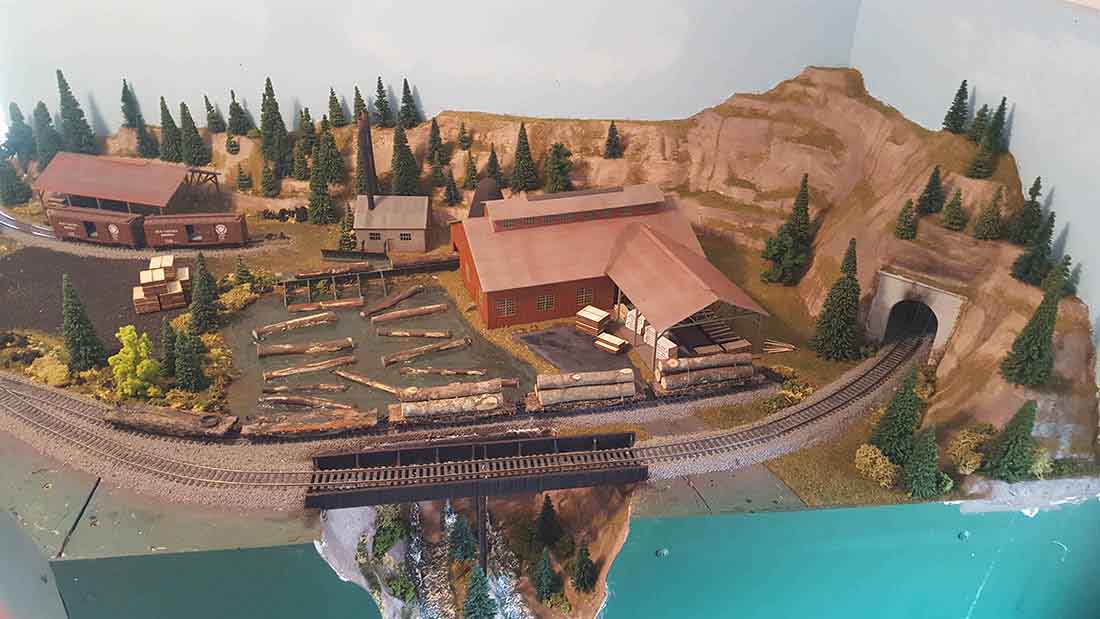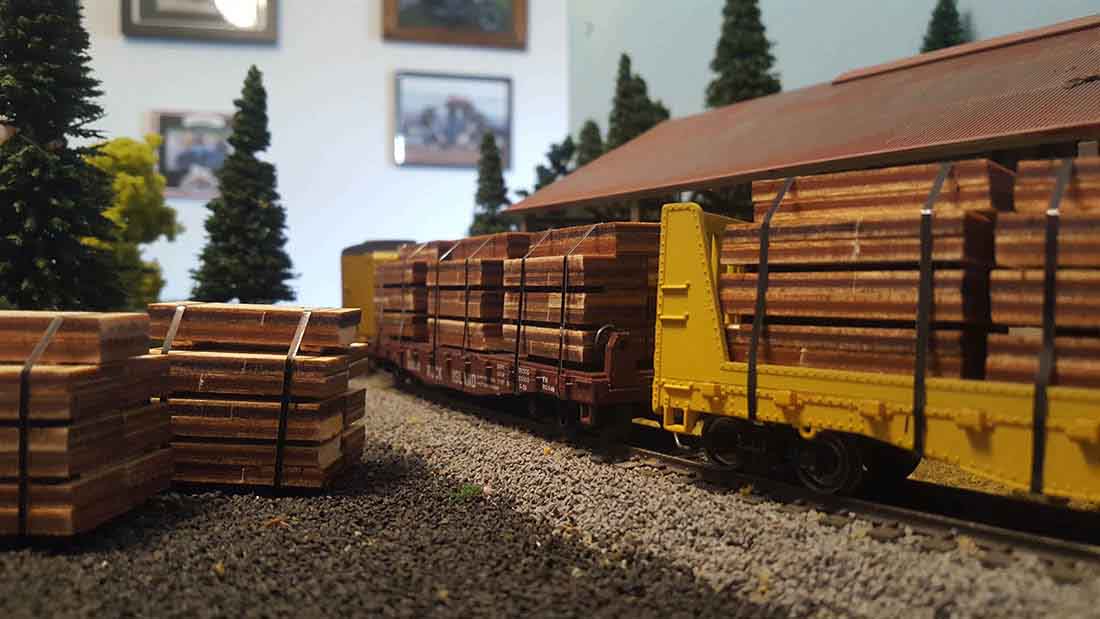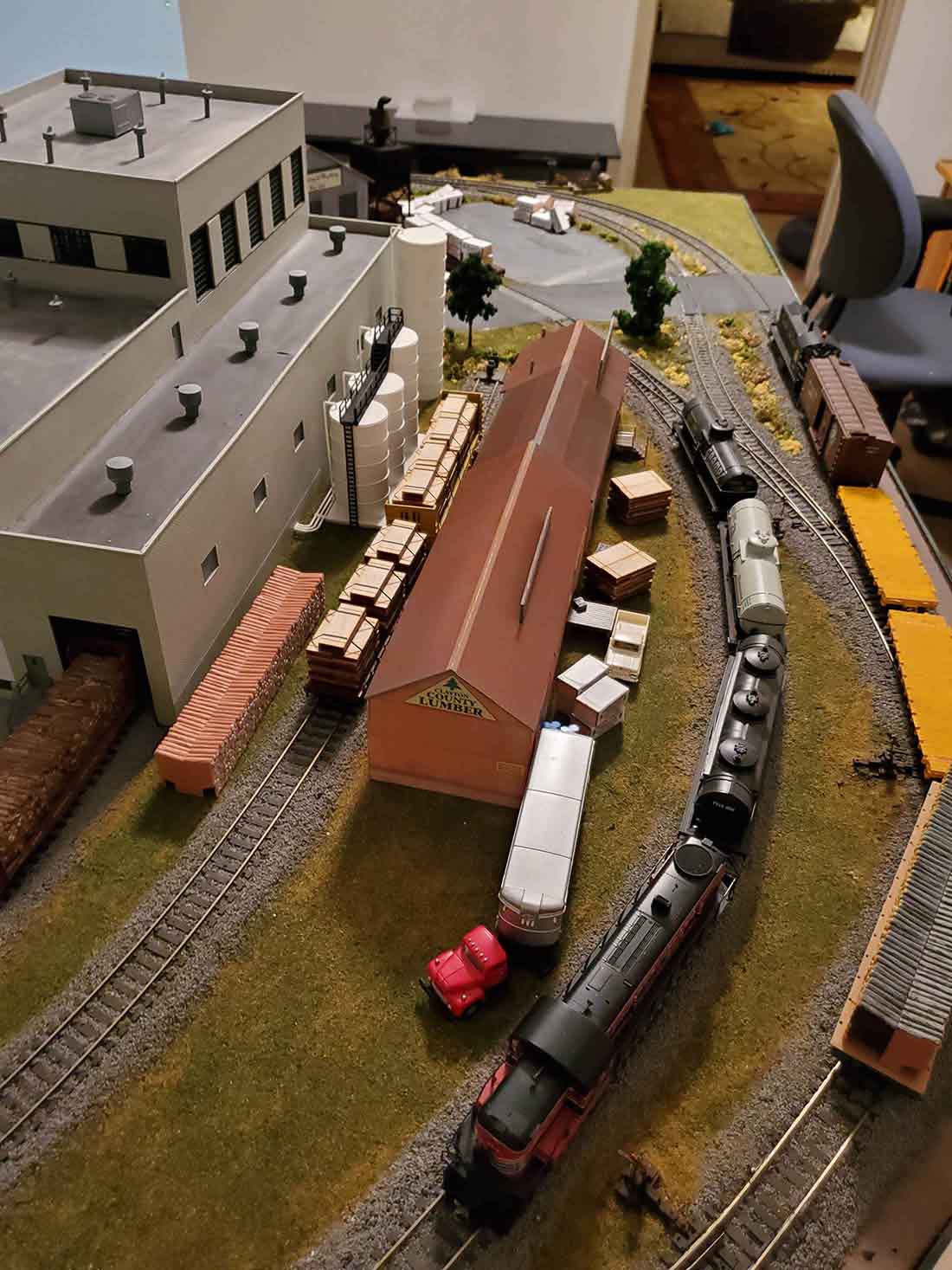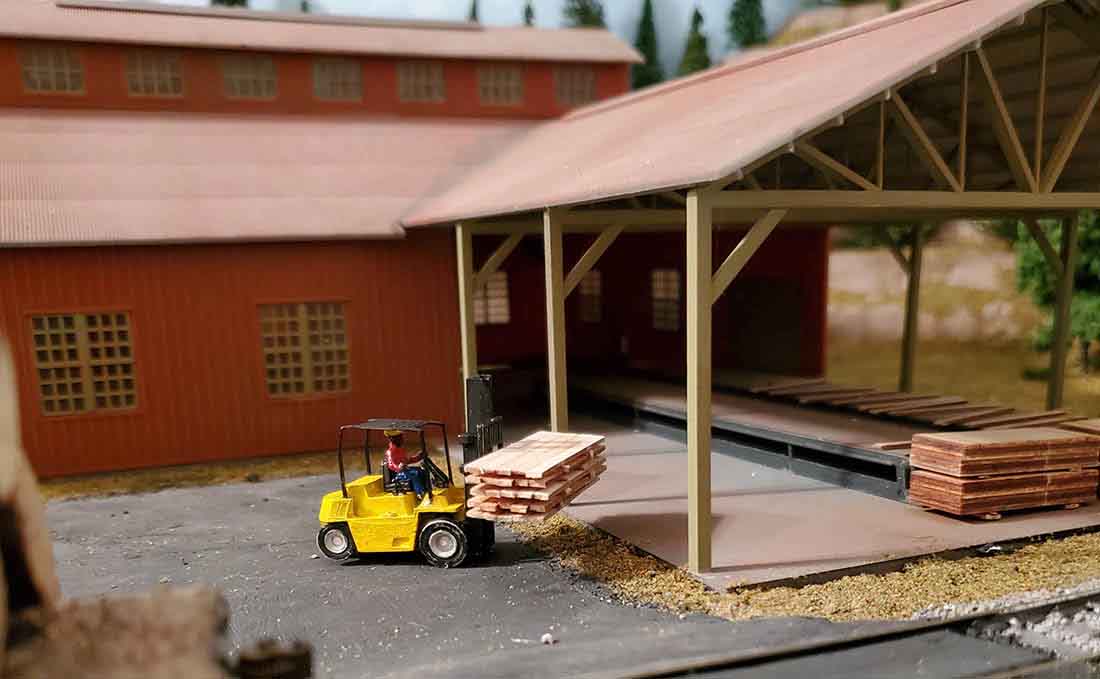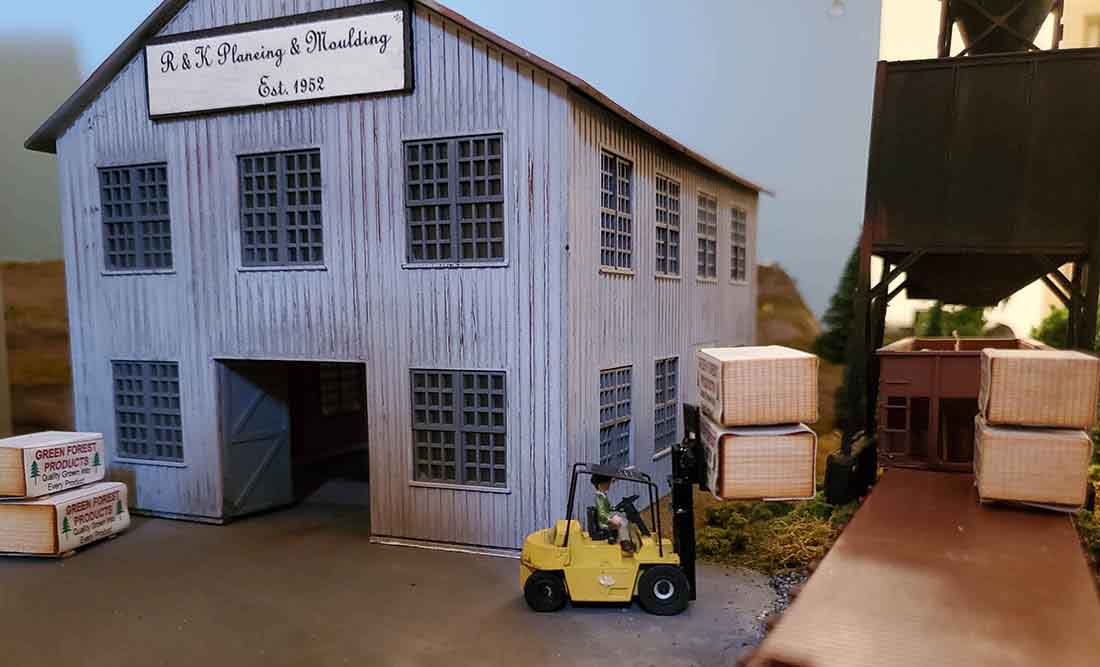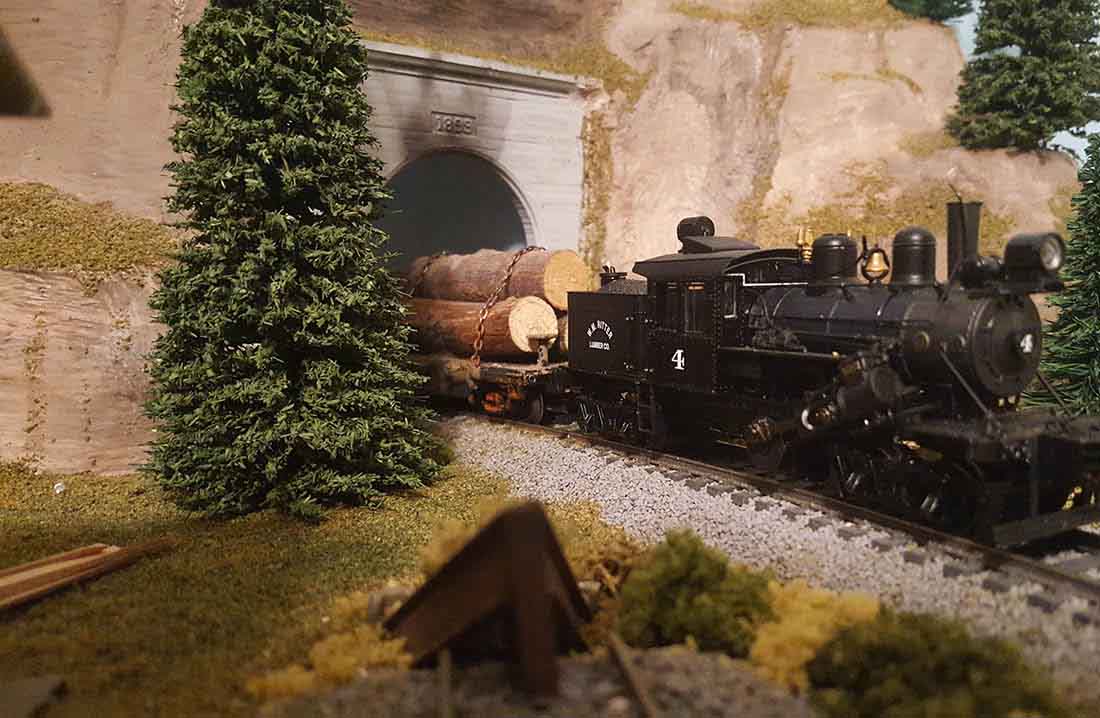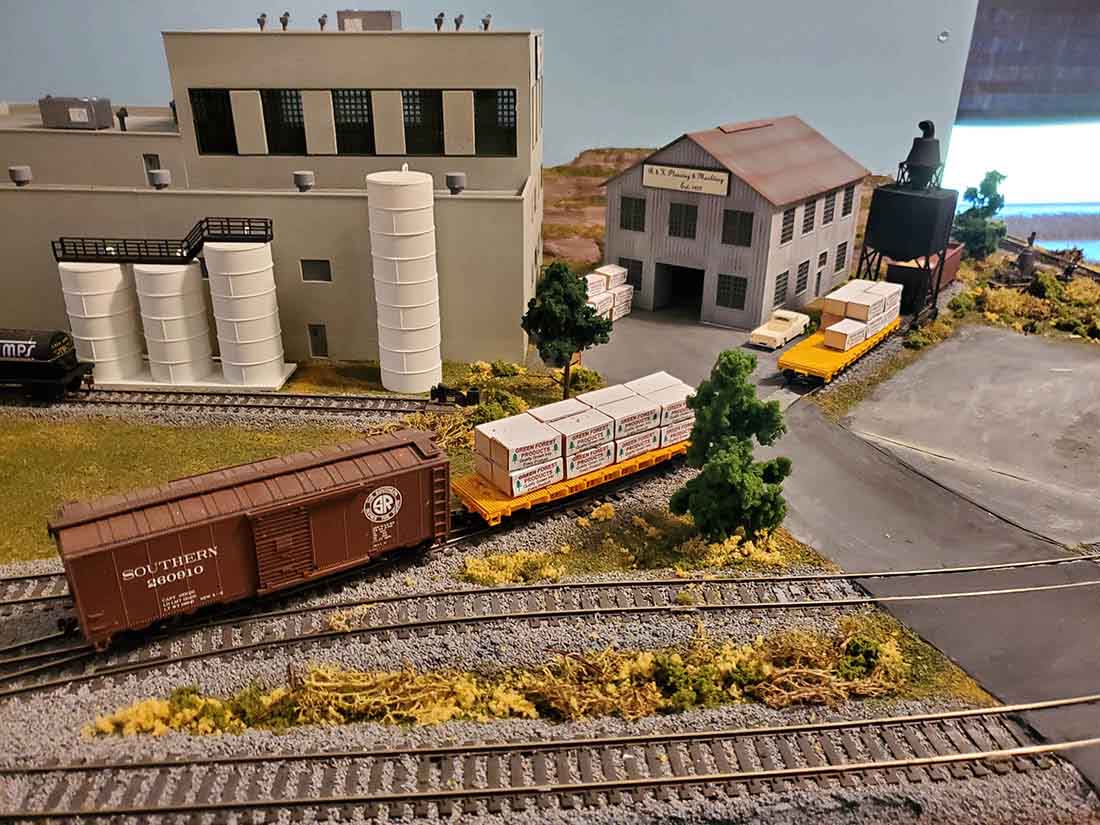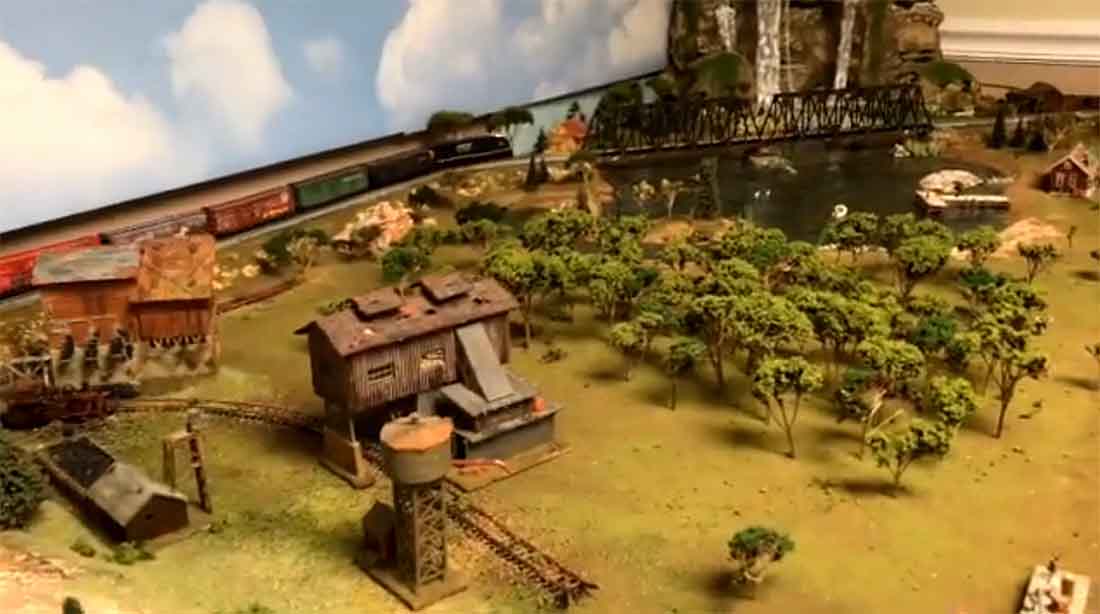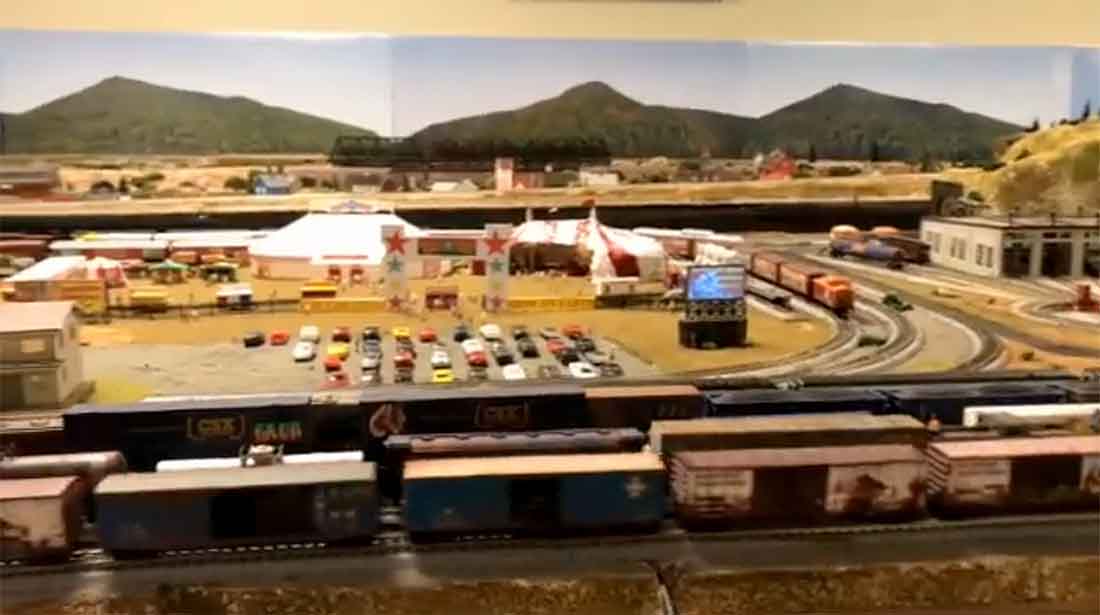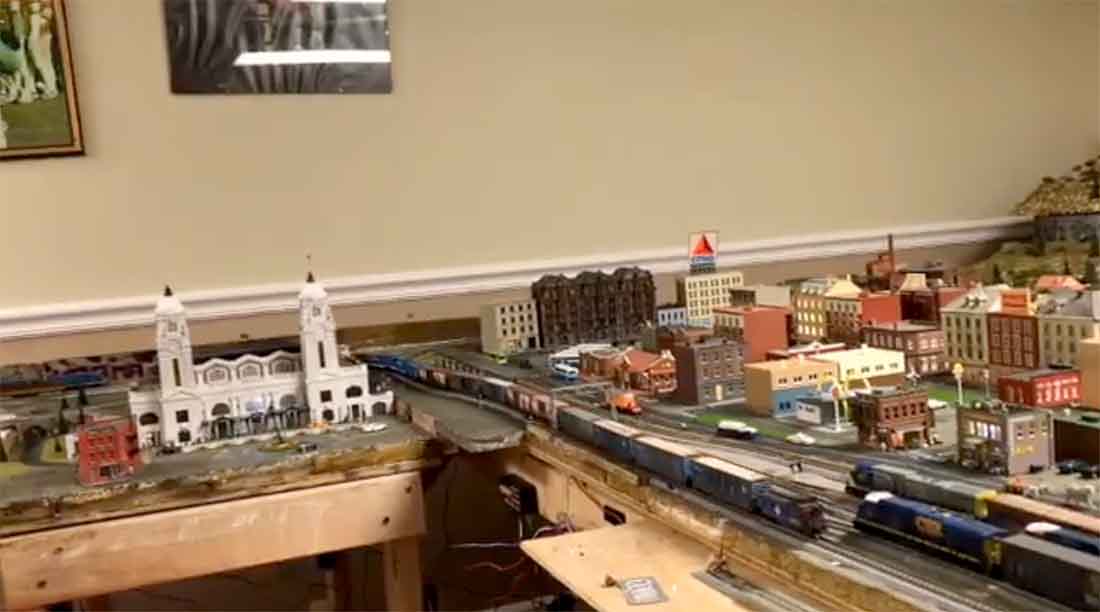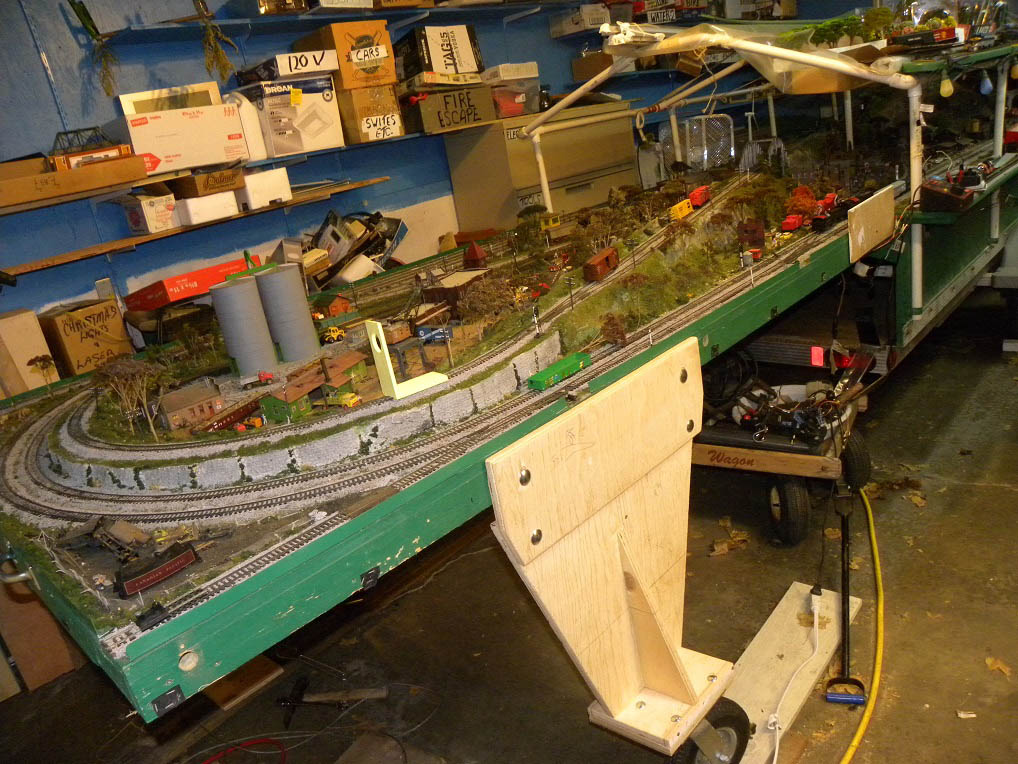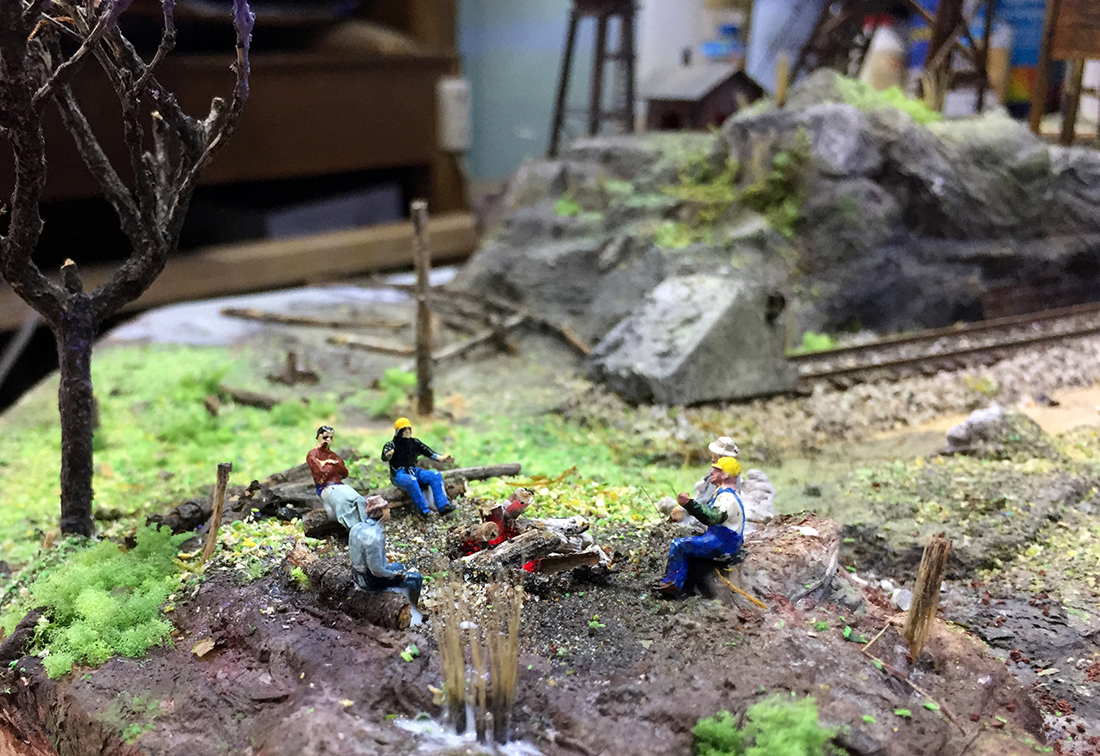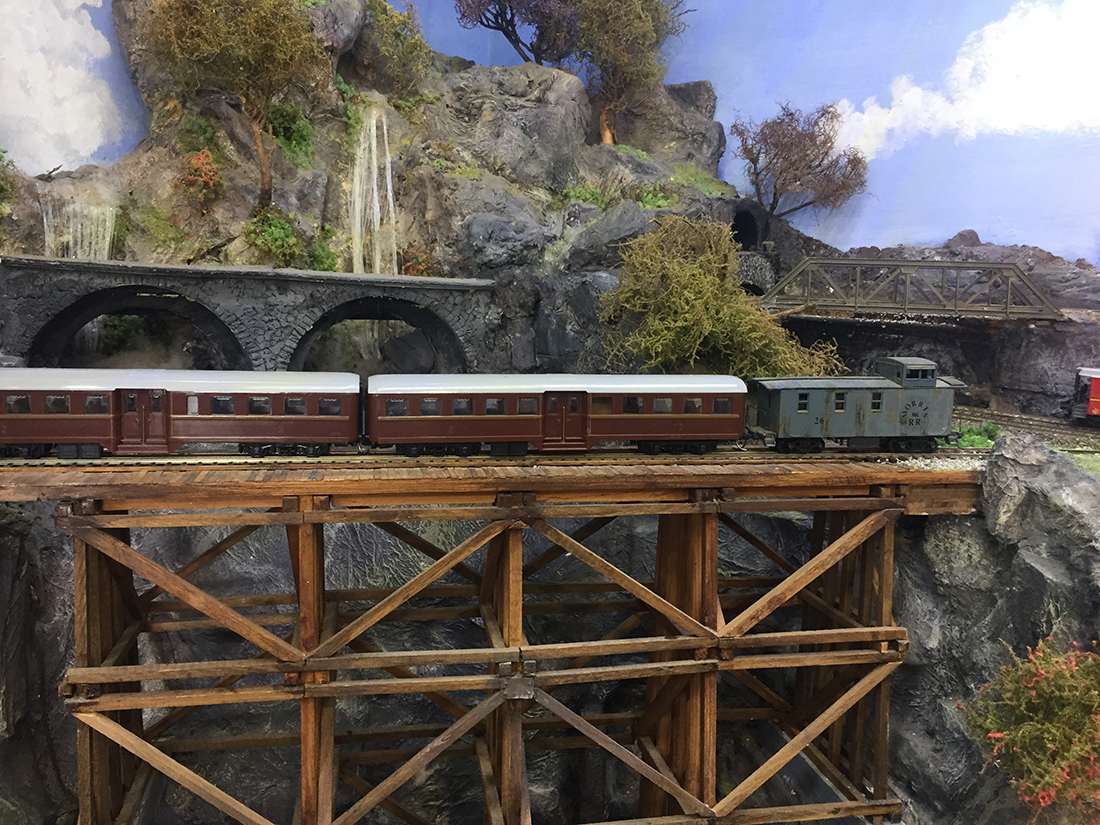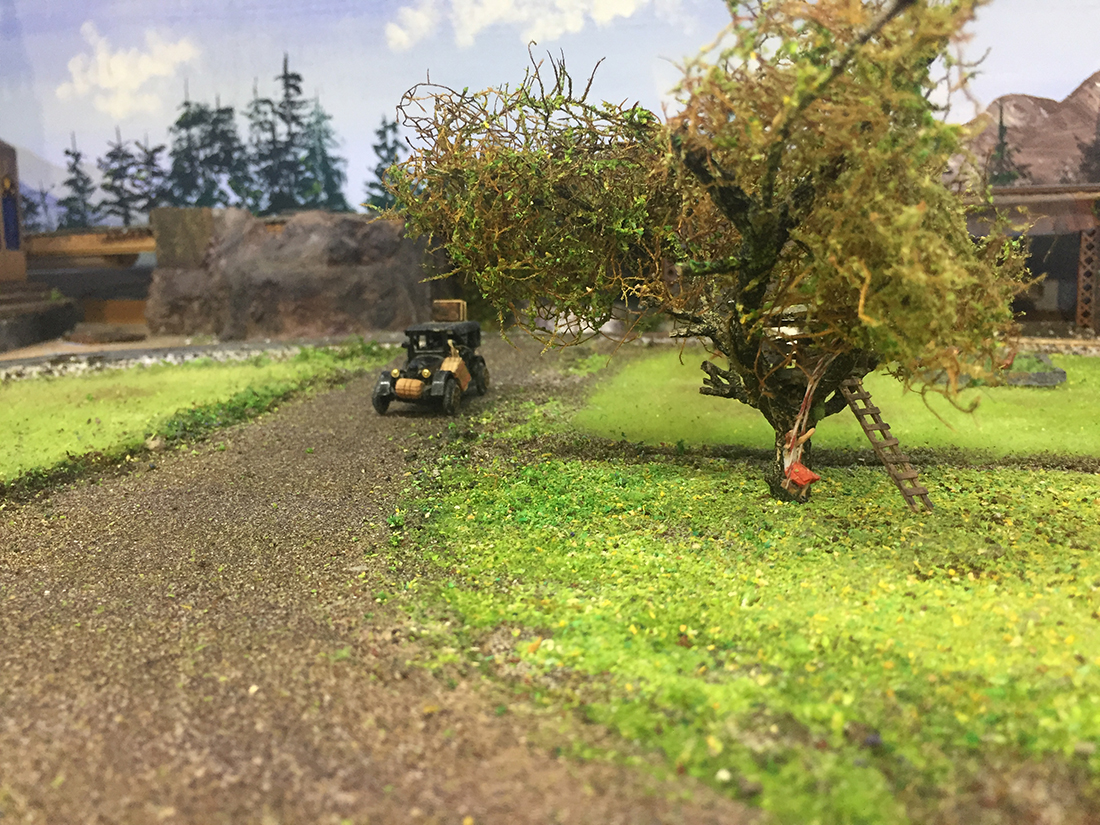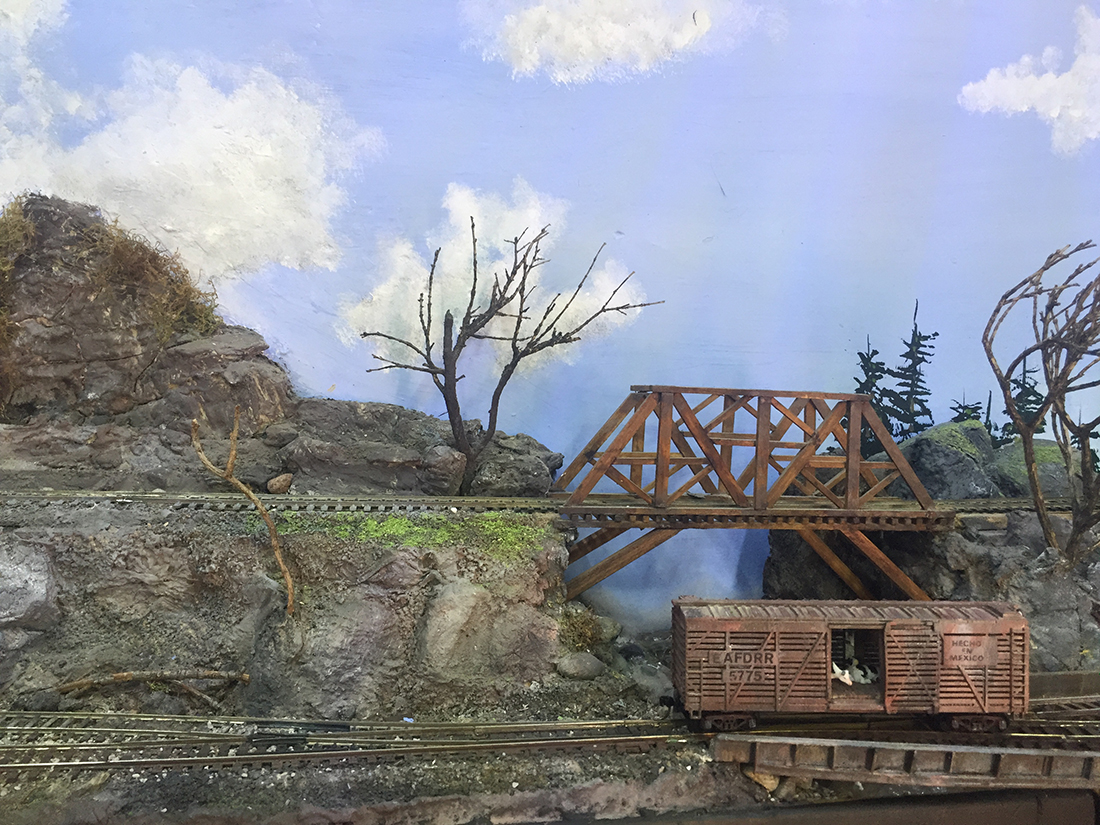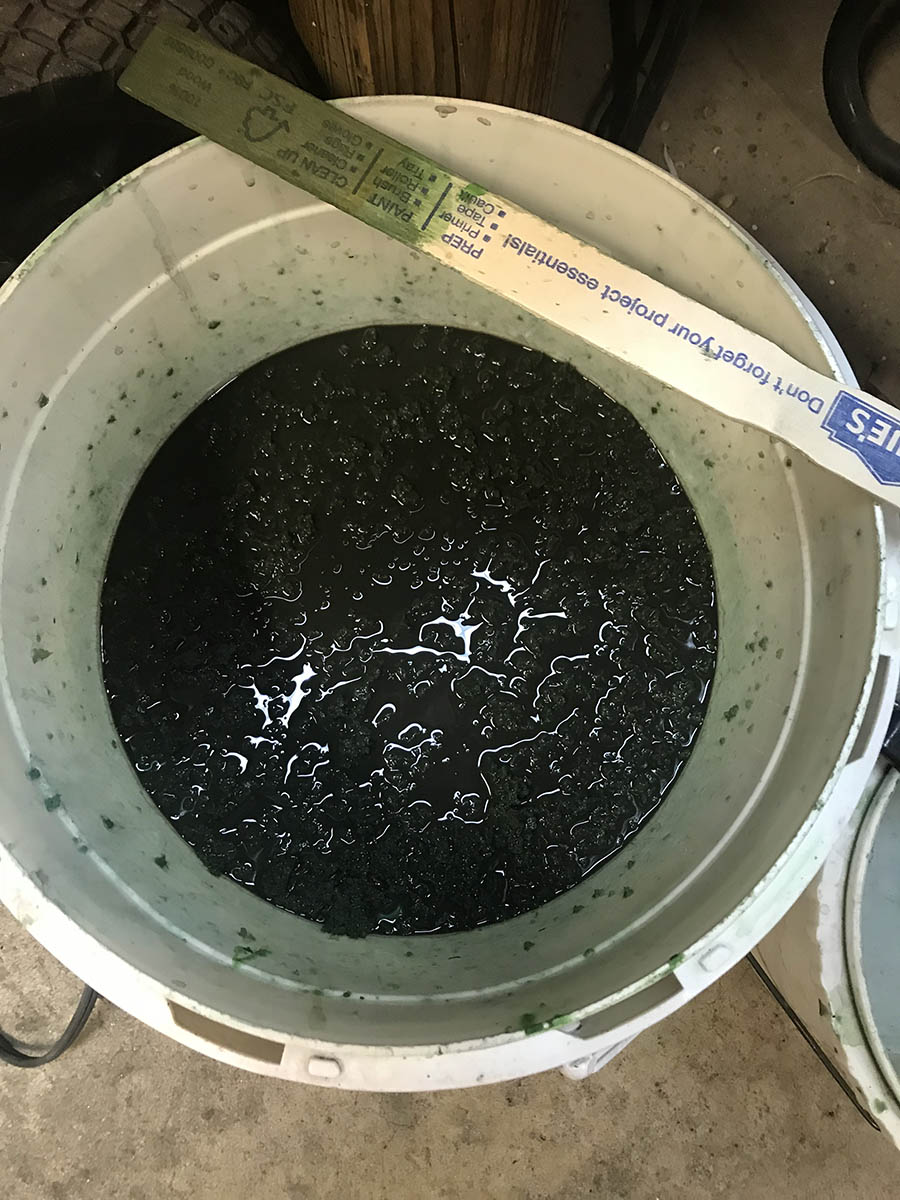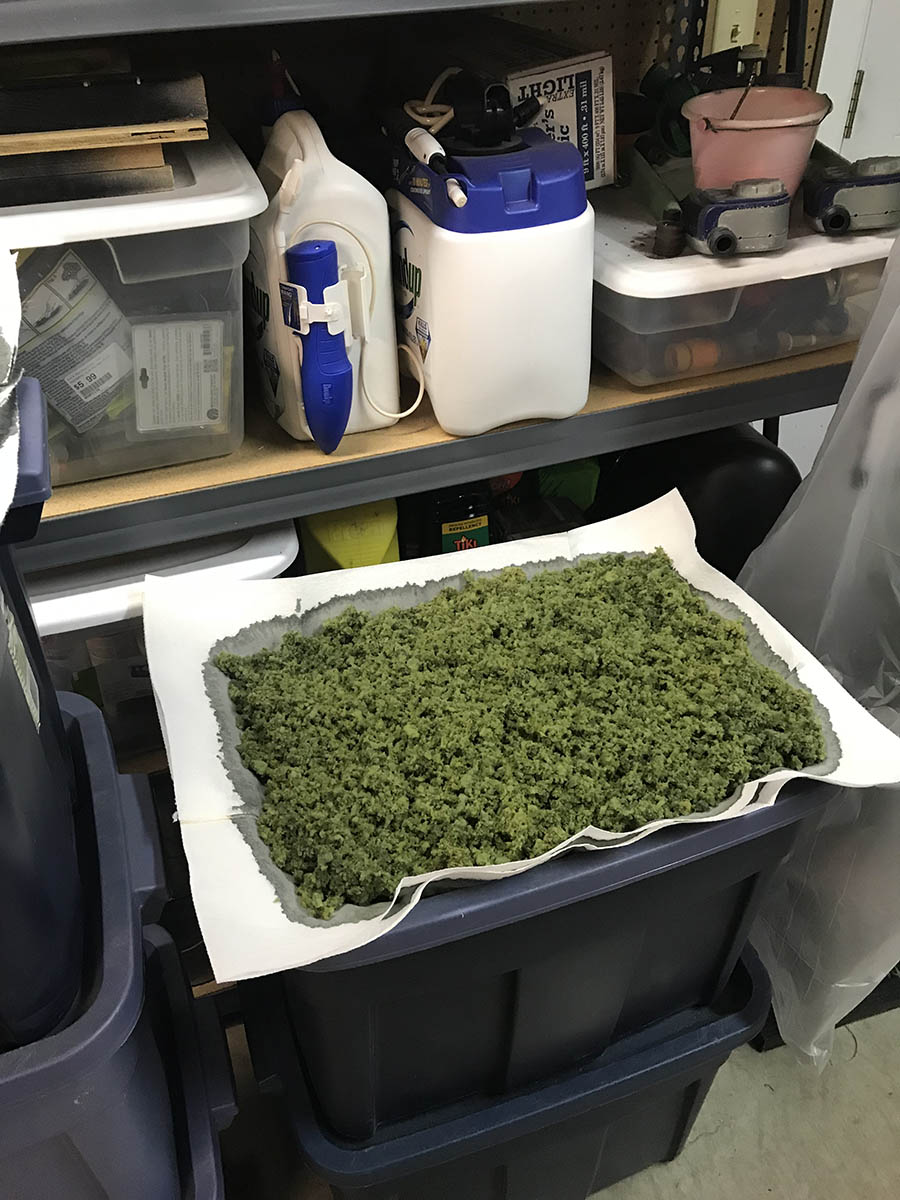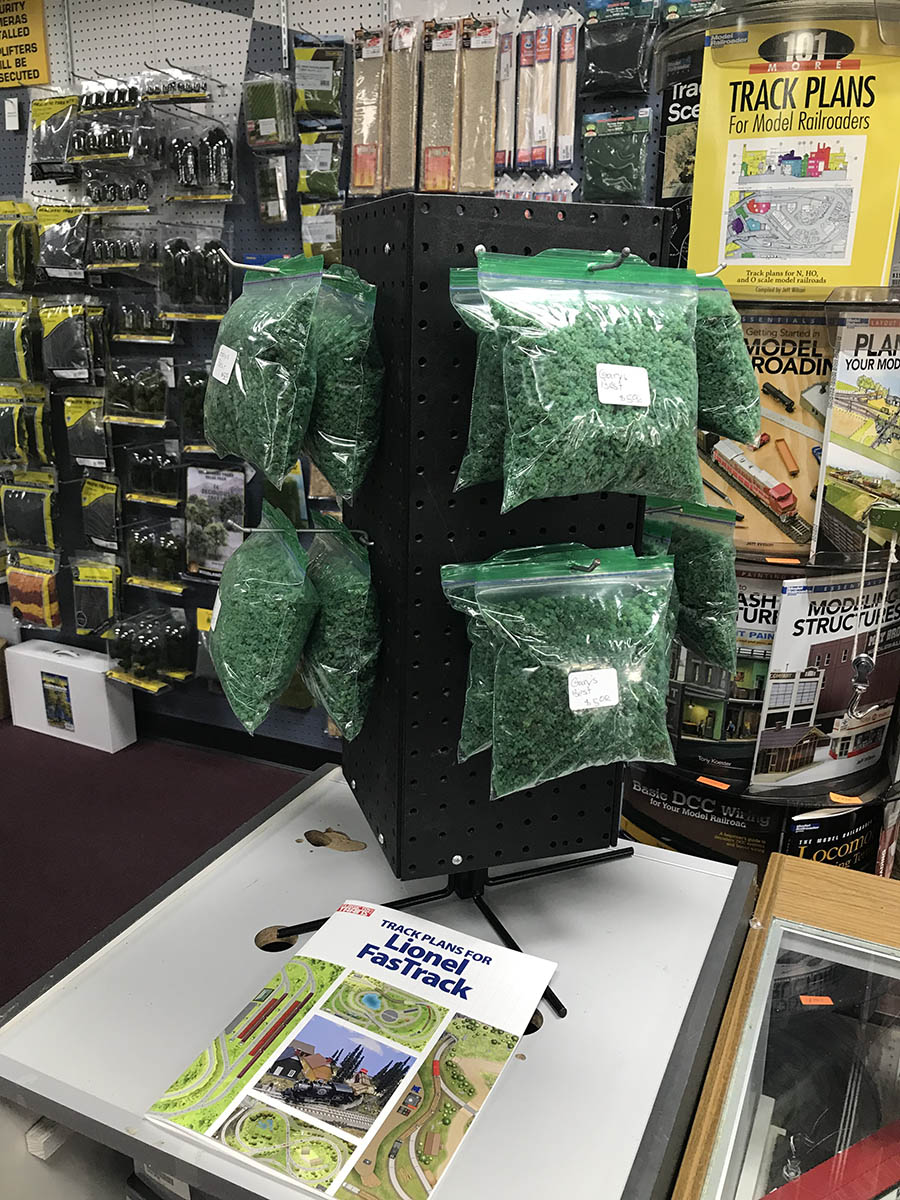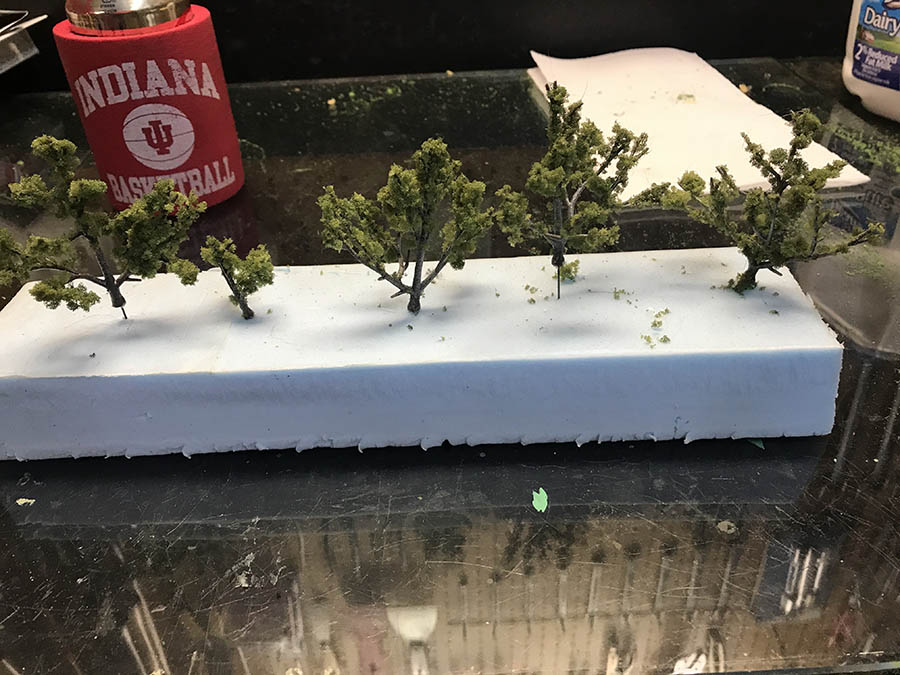Richard’s been in touch with this wonderfully documented HO layout build:
“Hi Al,
Richard here from Tuttle, Oklahoma…
This is actually my 3rd HO scale layout, it consists of Peco Code 100 turnouts and flex track, set later than the transition era.
All buildings are kits that I weathered and assembled.
The scenery is 1inch foam boards covered with plaster cloth and painted… the favorite part of the layout is the drainage area from the mill pond.
The dam is a piece of 3/4” board with 3 holes drilled into and plastic straws inserted for the culverts.
The cascading water is cellophane tape painted with artist medium… then painted and detailed…
As far as rolling stock, it’s a conglomeration of eBay, local train shop, and wherever… lol
Anyway, here’s a few pictures… hope you’ll find it interesting….
Construction began with 2×3 legs with a 1×4 L girder design with a 6 x 6 foot table size. Then topped with a 3/8″ plywood covering and 1inch foam board.
As you can see, layout of building cutouts were used to help align track and building layout. Now the cork roadbed was laid. Track was beginning to be laid starting with the turnouts.
This next series of pics shows the buildings purchased… and the excavation of the dam and drainage area for the sawmill… the pond will later hold the logs that are unloaded from the railcars and will be recessed as if “floating” … as you will see in future pics.
Track has been laid using “spikes” only and then the foam board painted green for any missed plantings.
Mountains are being built using 1″ foam board in layers by just using my imagination and random breaking and stacking. You see how the tunnel portal looks as if it’s built into the mountain….
More mountain construction… plaster cloth over the foam board… once dried, painted with a thinned plaster paris mixture… the tunnel really looks good in its new home
Now the best part of the build… the mill pond drainage area… as you can see the original creek was fairly deep so a dam was constructed along the rail line to utilize unloading of the logs…
Mill pond drainage
Mill pond drainage area finally completed
On to the mill pond and sawmill…. started with excavating the foam from the mill pond area… poured in a thinned mixture of plaster paris and while still wet pushed in the logs to appear submerged and then once dried, painted the water a dingy green to simulate dirty mill pond water.
Then applied a gloss artist medium to give it a sheen appearance. The sign on the sawmill was printed on my printer and weathered. Trees have been added and many, many bundles of lumber stacks that had to be assembled.
The lumber shed is a rail load out point along with truck loading. The tunnel portal shows signs of the older steam engines smoke stacks, which on occasion a steam powered climax makes an appearance.
An overall view of the raw material side and the production and retail industry side separated by a backdrop
Well…. there’s the ole girl…. Steam powered climax and diesel powered F7
Well, Al…that pretty much sums it up… by the way… a new larger layout is in the planning stage…
Thank you for allowing me to share this endeavor… of just under 2 years in the making.
Richard of Oklahoma”
A huge thanks to Richard for sharing his HO layout build – what a layout and so well documented too.
Hope you enjoyed it as much as I did. Please do leave a comment below if you’d like to.
That’s all this time. Keep ’em coming.
And don’t forget the Beginner’s Guide is here if you want to get going on your own layout.
Best
Al

